Hyundai Palisade review and buyer’s guide
The Hyundai Palisade is a big, bold and comfortable holiday machine for growing families. Palisade offers excellent value, generous 8-seat SUV space, and practicality on par with LandCruiser, but at a much more affordable price.
The Hyundai Palisade is an eight-seat large SUV with acres of space, excellent equipment levels and grunty powertrains, all wrapped in a body and interior that rivals anything European. But there’s more to it than tough looks.
Palisade is an excellent vehicle if you need to move a large family of growing teenagers to their various social/sporting commitments and also get yourself to work in comfort. And it’ll double as a smart choice for long-distance holiday roadtrip adventures.
There’s also a good case for Palisade as transport for your small (or big) business if you pick up clientele from airports or visit new ones.
What Palisade lacks in subtlety it more than makes up for in multi-purpose practicality - it can tow a modest trailer, it can seat up to eight, there’s loads of luggage space and ample legroom for big drives on school holidays.
If you’re shopping for a new large SUV, you’ll want to be also comparing Palisade with Hyundai Santa Fe >>, Kia Sorento >>, Mazda CX-9 >> and CX-8 >>, or the Toyota Kluger >>. You might also want to entertain the idea of a Kia Carnival >> as the near-perfect tactical response to having lots of kids with people to see and places to go.
You can download the full Hyundai Palisade spec sheet here >>
Hyudai Palisade is based on the Santa Fe platform, but gets a bigger body, essentially - without going overboard in the manner of some American ‘suburban’ SUV like a Ford Explorer. It’s only 4 per cent longer than a Santa Fe (it’s 4.99 metres), it’s only 10mm shorter than a Toyota LandCruiser, which means it offers the same amount of legroom, headroom, seats and luggage space - and it’s even got a full-size spare wheel.
But the Palisade range tops out below $80,000 - whereas a LandCruiser 300 just keeps going. Admittedly, the LandCruiser has a monstrous twin-turbo V6 diesel and lots of hardcore four-wheel drive equipment which adds complexity, expense and (notably) weight.
There’s a lot to love and a few things to question about Palisade, so below is the original Palisade review and buyer’s guide Pro/Con list to help summarise what does and doesn’t work - so that you can make an informed choice:
Palisade is available in two model grades - ‘Elite’ and ‘Calligraphy’ (‘Black Ink’ is just a black pack). There’s no real base model. It’s more a mid-spec and a high-trim variant.
So, if the budget is tight, you can relax, because the base ‘Palisade’ is hardly ‘poverty’. The price difference is $11,000, which is substantial, but if you can live without the twin sunroofs, the full Nappa leather, the two-speed auto tailgate, the heated and ventilated front and row 2 seats, and the heated steering wheel, you’ll be quite okay in the more affordable Palisade.
CON
Legacy left-hand drive park brake switch & overhead grab handle
Compromised towing capability
Thirsty petrol V6
Better seating & sliding doors on Kia Carnival (at lower price)
White leather with kids
PRO
8-seat combination; 7 seats (captain’s chairs row 2)
Full-sized spare wheel and tyre
Diesel-AWD powertrain
Long list of standard equipment
Big 71L fuel tank; very good fuel economy (diesel)
Flat luggage space & versatile cabin
Excellent dynamic stability, superbly comfortable
Decent pricing & value
A NEW PALISADE IS COMING IN 2025…
Delayed into Australia by the global calamity of 2020, the Hyundai Palisade finally landed in 2021 as the company’s first eight-seat full-size SUV and sales were, initially, sluggish given the economy at the time and global shipping (which are kind of the same thing).
An update came in late 2023 which gave the Palisade a sharper, sexier new face and now that the Santa Fe has a whole new platform with a model-first hybrid powertrain and every other model in Hyundai’s range (bar Staria) is onto its next generation for the foreseeable future, it’s finally time for Palisade.
Having launched in Korea back in December:
New-generation Palisade is due locally in [the] second half of 2025.
Not only will there be 2 per cent more legroom (as if it wasn’t already generous enough), the overall length has increased by 65mm to 5060mm. There’s also 35mm of additional rear overhang allowing for more third-row seating access and a slightly longer boot capacity.







The Palisade model actually dates back to 2017-18 when it was first introduced into the North American market as a good-value choice to draw buyers away from the likes of Ford Explorers, Chevy Suburbans and Toyota Highlanders.
In Australia, Palisade competes with Kluger, Kia Sorento, Santa Fe and Mazda CX-70/90 but shouldn’t be compared with more off-road focussed models like the Ford Everest, Isuzu MU-X, Mitsubishi Pajero Sport and Toyota Prado, even though the car industry groups them all together as ‘large SUVs’.
Palisade offers a formidable soft-roading all-wheel-drive terrain response package, but sales are directly comparable to the lighter-duty SUVs and in 2024, sales were solid.
Palisade managed 3770 sales in 2024, behind Santa Fe on 5300 units, the Kia Sorento on over 7900 sales, Toyota Kluger on over 9800 units - even a Tiguan Allspace beat Palisade with 4200+ sales. The Subaru Outback was technically the class leader on 10,000+ sales, but it’s a 5-seater costing $15,000 less than its rivals, so it’s not really in the same league.
But what’s fascinating to see is how much Palisade is asking (circa $85,000) and yet it’s losing sales to newer vehicles, more expensive rivals and more capable options. Sorento has the same engines, yet costs $10,000 less. Pajero Sport is positively ancient and costs $20,000 less while being a highly capable off-roader. And then there’s the cannibalisation factor with new Santa Fe with its hybrid powertrain and modern square-themed design.
This new arrival means two important things for you, as a consumer. You can look forward to some run-out pricing and good deals on existing stock until mid-2025 - so expect new orders to cease after June 30, most likely.
And it means that if you do want to come down off the fence about getting a current Palisade, you’d best made that choice in the next couple of months. Otherwise, you might want to wait for the new model to arrive in the latter half of 2025, and give it another six months of so to know if it has any kinks or foibles to iron out first. (Always wait 6-12 months on the first arrival of a model’s new generation.)
Given Hyundai’s recent history, it’s hard to see the new Palisade being anything other than reliable, comfortable, practical and capable. You can expect it will remain an 8-seater with all-wheel drive and gets the 1.6 turbo-petrol hybrid powertrain we’ve seen implemented quite successfully into the Santa Fe to replace the 2.2-litre turbo-diesel engine.
What remains unknown is whether the 2.2-litre diesel might actually stay in Palisade as either a premium engine option in Australia, given that over 90 per cent of Palisade sales are the 2.2 diesel. Scenario #2 is it will go entirely and the 2.5-litre turbo-petrol unit seen in Santa Fe will replace it. Either way, that thirsty 20-year-old V6 is a goner.
It’s also quite reasonable to expect the XRT treatment from the Santa Fe to make its way into the Palisade line-up. However, this still won’t be enough to help it compete with proper off-roaders with low-range transfer gearing and 230mm+ of adequate ride-height.
What’s unlikely is that Palisade would ever become a successor to the long-dead Terracan 4X4 from the late 2000s. This would absolutely be achievable with the underpinnings and R&D investment that Hyundai-Kia has tipped into developing the Tasman ute (arriving mid-2025). But the company doesn’t appear interested in the lucrative market of big 4X4 SUVs to compete with Toyota, Mitsubishi and Nissan.
It’s also hard to see Hyundai Motor Co. making that investment given how long it took them to come to the dual-cab ute party… and now that Tasman isn’t even here yet, it’s kind of too late.
Hyundai is also quite good, it must be said, at proving its detractors wrong.
FEATURES & PRICING
Prices have not been quietly creeping up in the last six months (like everything else has) despite the imminent arrival of the new Palisade arriving in second-half of 2025 - which is a nice change from the norm these days.
There are only two primary model grades of Palisade, and there’s a very good list of standard equipment on the base model.
There’s the Elite or the Calligraphy, essentially. This leases just the ‘Black Ink’ which is basically a black-pack for $1000 that gets you dark stickers, badges and tinting.
Palisade is the most expensive Hyundai at $80k plus on-road costs for the diesel Calligraphy Black Ink. That sounds like it’s a bad thing, but when you think about it, it’s actually about $54,000 cheaper than a fully-loaded Toyota Landcruiser. (And a Landcruiser 300 offers only seven seats.)
Here are the headline features you’ll get on each variant of Palisade:
ELITE: $72,700 driveaway approx. (petrol V6) | $76,800 driveaway approx. (diesel)
8-seat configuration
20-inch alloy wheels + full-size spare wheel
Leather seats + steering wheel
Push-button transmission selector
Apple CarPlay & Android Auto (both cabled) + wireless smartphone charging (15 watts, fan-cooled)
Electric front seats: 10-way driver, 8-way passenger (both heated)
Adaptive cruise control (incl. stop-go), tyre pressure monitoring
12-speaker Infinity premium sound system
LED: headlights (auto & projector type), taillights, indicators, daytime running lights
Smart proxy key, remote start, push-button ignition
Satnav, powered tailgate, rear passenger intercom, front-seat sunroof
2 x 12.3-inch LCD screens (1 driver display, 1 infotainment touchscreen)
7 USB charging ports (6 C-type, 1 A type), 17 cupholders
Dual-zone climate control, row 3 vents & fan speed
Solar treated windscreen & front door glass, extendable front driver/passenger sunvisors
Rearview camera monitoring, front/rear parking sensors x 4
All Palisades use an electronic park brake (as do pretty much all modern SUVs), roof rails, side steps and a full-size spare mounted externally up under the rear.
Choosing the 7-seat version will cost the same on a base model Palisade Elite, however it will be an increase of about $4000 choosing the 7-seater over the 8 on the Calligraphy variants (formerly Highlander).
CALLIGRAPHY: $82,200 driveaway approx. (petrol) | $86,650 driveaway approx. (diesel)
adds on top of Elite:
Nappa leather +two-tone leather steering wheel
Remote parking (forward/reverse), reverse light ground projection
Driver’s electric seat position memory (incl. door mirror & head-up display positions) + easy-entry seat lowering
12-way electric seats (incl lumbar & thigh base extension)
Auto wipers, row 2 outboard headrest bolsters, row 2 sunshades, auto windscreen de-fogging
Head-up display, digital central mirror w/ full-screen integration
Blindspot camera, rear parking collision avoidance, 360-degree camera system incl. side camera, full 6-sensor parking array (front & rear) + tailgate opening guidelines & trailer connection mode
Acoustic treatment on rear door glass & ‘hydrophobic’ (water beading) front door glass
Dual-panel sunroof: fixed rear glass, tilt/slide front panel; electric sunshade
Cooled (ventilated) front seats + row 2 outboard seats, heated row 2 outboard seats; front & rear outboard seats: auto seat heating/cooling control
You can tell the Calligraphy apart by the body coloured wheelarches and the dual-panel sunroof on the outside. Then on the inside there’s a satin-chrome skid plate on the door sills, stainless steel speaker covers on the doors and a scuff plate on the boot floor lip edge when you open the tailgate.
‘BLACK INK’ PACK: $84,800 driveaway approx. (petrol) | $90,070 driveaway approx. (diesel) (+$5200 over petrol)
‘Black Ink’ pack adds $1000 to Calligraphy
and gets:
Suede Leather 7 appointed seats
dark tinted taillights, badges
dark chrome skid plates
dark metallic painted roof rails
Choosing the 8-seat Palisade option is, happily enough, a slightly more affordable option than going for the 7-seat cabin layout. So you get more capability for less cash. Why is this?
Because the row 2 seats in a 7-seat Palisade are what’s known as ‘Captains chairs’. They get fold-down arm rests and allow centre walk-through access to row 3. Those row-2 outboard seats also get independent heating and cooling. The adjustable wings in the headrest, which are standard, are perfect for letting teenagers sleep while you drive them home from wherever.
INTERIOR
The Palisade’s biggest appeal is its interior functionality.
The fundamental choice you have to make on the Palisade is: Seven seats, or eight? Either way, the cost is the same - so this is about what you need, not what you can afford. Both versions get two buckets at the front and a three-wide bench right at the back. Seven seaters get an additional two buckets in row two, and eight seaters get a three-seat bench in row two.
If you’ve got young kids you get five top-tether child seat anchor points on eight-seat models and four on seven-seaters). The big trick for seven seaters is the walk-through functionality to access row three, but the one-button sliding built into row two is also excellent and efficient for accessing row three on eight-seaters - provided you don’t have to move a child restraint out of the way first.
The ability to move seats individually makes moving in and out easy, and adjusting the front seats in every direction makes it effortless for you, even if you’re very tall, or very short, and trying to find that ideal driving position is traditionally a challenge for you. And they’re remarkably comfortable for long-distance driving.
If you’ve got up to eight arses to convey from A to B, and you also need luggage space, Palisade is a beast. This is a huge plus for a niche market of enthusiastic parent.
In fact, Palisade is an ideal vehicle if your objective is to maintain a social standard whereby SUVs are in, and even the best people movers like the Kia Carnival and Hyundai Staria are ‘too much’ for some. In reality, most seven-seat SUVs cannot carry much when there’s a backside sitting on every seat. Footwells can only hold so much.
Palisade also earns bonus status points for being an actual an SUV - meaning you’re not damned to automotive hell for eternity by the curse of being seen in a people mover. It might be a bit irrational, but it’s understandable if that’s you.
If you want a big SUV and you can’t choose between Palisade and Santa Fe - buy the Santa Fe if you don’t intend to use the third row of seats frequently.
Objectively the justifications for Palisade are: You need eight seats (with curtain airbags to match) and you can’t consign yourself to a people mover. Or if you need maximum internal cargo versatility - as in, cargo space with all seats occupied - or family transport that you sometimes also use for transporting bulky items. Palisade wins in these areas.
Palisade does have the larger boot space (over Santa Fe), so if you’re a family of maximum packers, it will be easier to get more into it than its slightly smaller sister. It also has 135mm of wheelbase advantage over Santa Fe, meaning Palisade does have greater legroom - ideal for that growing family.
The cabin’s versatility is profound even in the context of having, say, three kids. This is because the third row of seats does have 2 child restraint anchor points of the top tether variety (the left-outboard and the centre), and one set of ISOFix anchor points on the left outboard seat - that’s both the 7- or 8-seater. The right-outboard row-3 seating position has no anchor points.
In the 8-seat version, you get 3 top tether points along the second-row seats, with 2 pairs of ISOFix points on the outboard seats. There is no capacity for child restraints in the centre of row 2.
So the maximum number of child seats you can get in here using ISOFix only, is three. The maximum number of child restraints you can get in either the 7- or 8-seater is four - because the centre seat of row 2 is the one you do or don’t get depending on which version of Palisade you pick.
With one push of a button, you can slide the whole seat forward so it’s actually out of the way so an adult can step into row 3.
One size really does fit all, in a Palisade. You can be doing the whole ‘soccer mom’ thing one minute, and then nip down wherever and pick up some properly bulky item, nudge the seats aside, transport it home, and be back in time to pick up the kids from the game. And nobody will ever know about your sick, twisted cargo van fetish.
You can also hedge your bets, internally, by mixing and matching passengers and bulky items, length-wise, and width-wise. It’s a very versatile vehicle.
This thing is fully loaded. Like, it would take until the middle of next week to run through all the features. There is no exhaustive high-priced options list to wade through - a somewhat grubby price-pumping scam favoured by the prestige brands to get you to part with an extra $25k more than you anticipated spending.
Palisade Highlander has it all standard. The 360-degree camera system. You get infinity electrical adjustments for the driver’s seat. It’s got two sunroofs, for God’s sake. And the climate control air conditioning even decides when it’s appropriate to blow chilled (or presumably warm) air up your bottom, through the perforated seat leather. One of those unexpected ‘surprise and delight’ features. Even if you are, however occasionally, wearing pants.
They’ve put a lot of thought into the interior. The floating console is extremely space efficient, especially for big and bulky things like oversize water bottles, snacks, or whatever thing you might need to pop on charge which doesn’t fit in the primary cubby hole up top or which might simply get in the way of vehicle ops. Like a tablet or the camping torch, etc.
This USB cable management port between the storage area on the ground floor and the penthouse in the console lets you charge two USB devices in the penthouse, or three if you use a 12-volt to USB converter in the cigarette lighter power outlet in the basement. And these magic centre cupholders are also very versatile and space efficient.
You get wireless inductive charging for your smartphone, and there’s a tonne of additional USB outlets, storage spaces and air vents throughout the cabin. So, even in row three you’re hardly slumming it.
ENGINE
The 2.2 Diesel powertrain is the one to get. Eight-speed auto plus on-demand AWD is extremely well-suited to this vehicle. This will cost you $4000 more than the 2WD petrol V6, but it’s worth more than every penny in terms of both economy, refinement and performance. So if you’re on the showroom floor and flipping a coin on powertrains - get the diesel.
As discussed: the diesel is the one to get because it only costs about five per cent more, but actually offers more grunt than the V6 where it counts - low RPM. The V6 makes 217 kilowatts of peak power, but it has to rev up to 6000 in order to make it.
The crux of the problem is that Palisade weighs up to 1984kg in Calligraphy Black In trim, meaning the power-to-weight ratio is 112kW per tonne. That’s actually more than in the diesel which weighs 2070kg and makes 35 per cent less power than the petrol at 140kW - but where it counts is at low RPM.
Maximum torque is hurling the diesel forward at just 1750 RPM, whereas the petrol has to build itself up to 5300 RPM before it can start competing. Diesel Palisade wins.
Hyundai offers the 3.8-litre V6 as a notional ‘budget option’, but the diesel at only a few grand more is going to offer fuel economy savings that will break you even within a five years.
Just on weight, Palisade is actually pretty light in the context of other large SUVs with 4WD like Patrol or LandCruiser - by about 600kg. So Palisade actually goes better in a straight line than both of them, which is nice. But the Palisade also performs better on open roads, on twisty mountainous touring roads.
And of course Palisade also brakes better because: less mass at the same speed means less kinetic energy to restrain.
TOWING:
Standard towball download limit on Palisade is 100kg, which is a bit light in terms of the vehicle’s overall braked towing capacity of 2200kg. Very experienced and qualified towing drivers would generally be okay with this configuration, but with all the necessary pre-flight checks and inspections.
However, the maximum towball download limit can be improved from 100kg to 180kg getting the ‘Load Assist Kit’ from Hyundai.
You’ll want to consider the Hyundai ‘Load Assist Kit’ when buying a diesel Palisade because, for $634, it will add a bigger set of dampers and springs. An electronic brake controller kit is $744 from the dealer and will be a good idea if you’re planning on any kind of caravan, camper trailer or large box trailer - anything over the unbraked 750kg limit.
The optional towbar kit is $1456 and makes it a $2800 add-on to the Palisade. Now in the context of spending about $80K on this vehicle, it’s a fairly inconsequential sum and profoundly increased the vehicle’s overall capability in the towing space. The base vehicle already has the necessary wiring harness fitted as standard.
This still leaves you somewhere between $30-50K in front than someone buying a LandCruiser, and you’re still about $20K in front of any typical Nissan Patrol buyer.
What will make palisade such a good option for these light to moderate - and conservative - towing assignments is that it’s going to be an inherently stable combination. Palisade in its heaviest form weighs about 2000kg, and it’s limited to only 200kg over that, so dynamic stability at speed, in the event of something jumping out in front during cornering, is not going to descend into some tragic crash situation where the trailer dominates the towing vehicle.
Palisade has both the kerb mass and the healthy limitations on towing to make it a decent option in these conditions with a grunty diesel engine to pull the trailer in line in the event of sway or wobble, while also keeping it in control thanks to all-wheel drive.
Payload under the maximum towing limits is modest, however. If there’s that notional 180kg on the towball (with the required assist kit and brake controller), you’ve still got about 500kg worth of payload available. But you have to minus the 30kg towbar itself, so that brings you to 470kg. Add you, the driver at around 90kg (to be generous) and that’s 380kg left.
The overarching point here is if you’re going to max-out the Palisade on towing, you won’t really be able to max the payload - you’ll have to compromise. That’s not necessarily a bad thing if you don’t have a big heavy trailer; but if you do, a Mitsubishi Pajero Sport or one of our other Best Heavy Towing Vehicles will be better suited.
I'll help you save thousands on a new Hyundai Palisade here
Just fill in this form. No more car dealership rip-offs. Greater transparency. Less stress.
DRIVING
This is a superbly comfortable vehicle to drive long distances. It’s quiet, the ride is excellent and the dynamic performance is reassuring. Like, a vehicle this size is not something you chuck about, for kicks, but it is deceptively capable A-B on the open road. And it doesn’t feel like a tank on the open road (I’m looking at you, Toyota Landcruiser; Nissan Patrol.)
The big coil springs front and rear are supported by chunky dampers that Hyundai has a proven track record for tuning toward the ideal balance between firmness for great responsiveness, minimal body roll and positive steering feedback - as well as being suitably soft enough for passenger comfort. This latter aspect is where Palisade is slightly more biased toward, without going toward early-Lexus roly-poly.
And it’s nice that Hyundai has achieved this kind of ride comfort without subscribing to the ‘add weight & complexity’ mantra of, say, a Range Rover - which never helps on the reliability or durability front. Thankfully, Palisade is quite clever in striking this balance.
Palisade has a proper full-size spare wheel and tyre underslung, at the rear. This is perfect for regional touring.
There’s probably 900 kilometres of mobility in every 71-litre tank. At least, that’s about what you’ll get out of a tank of diesel. That could be rather a long limp home on a space-saver, after getting a flat in the middle of the night in a Mazda CX-9.
On fuel consumption while driving, the Palisade is going to perform better than most of its 7-seat large SUV counterparts, thanks again to being lighter and having a smaller engine. Talking diesel, the official fuel consumption (based on standardised lab tests) is 7.3 litres per 100km on the combined cycle. That’s 21 per cent better than a LandCruiser 300 Sahara.
Your Palisade is going to perform in plenty of light duty soft-roading conditions thanks to its ‘active’ AWD system which can direct drive to the rear wheels when the computer detects wheel slip or under high throttle applications. Any time you transition from sealed bitumen to gravel, the HTRAC system will be working in unison with the traction control underneath you to keep the vehicle from breaking traction or getting unstable.
The eight-speed automatic transmission is nicely tuned to hold gears when needed, such as long downhill country roads or freeways, but it also can be quite intuitive in shifting down when you encounter uphill sections that require more of that low-RPM grunt from the turbo-diesel. The petrol 3.8 V6 will roar into life to do the same amount of work where the diesel gives you a smooth push forward of power between about 1500-3000 RPM.
The adaptive cruise control is pretty slick to use out on the road in the mundane traffic. The pre-set distances are in the Goldilocks zone, no too far away from cars ahead that you’re impeding others, and nor too close that you’re not leaving enough time to react.
Long distance driving is going to be quite comfortable in Palisade’s big, supportive seats, and the kids are going to be kept entertained thanks to USB type-C charging ports and ventilation (cooling) in row 2 outboard positions.
If you have a steep driveway or some interesting angles to deal with in the course of your regular driving, (or even if you want to venture off-course from time to time) there are some pretty good angles on Palisade in terms of approach (18.5 degrees) and departure (20.3 degrees), and its break-over angle at 17.9 degrees. (Note: Toyota doesn’t explicitly state these angles on the LandCruiser 300, despite being the alleged king off-road).
Even Palisade’s ground clearance is respectable at 203mm, which is just 3cm shy of a LandCruiser. Now in fairness, approach and departure on a Sahara are better - that’s a fact - at 24 and 25 degrees respectively. But this only matters in the most extreme of driving scenarios - and you’re never going to be realistically testing these limits in a Palisade.
What this does mean is unless you’re planning to two lots of big, heavy stuff routinely, a great deal of what LandCruiser can do in a large portion of daily driving can be done with a Palisade at a much lower price, with more standard equipment. And reliability is hardly going to be an issue, realistically.
All of you people going ‘it’s too big’ - or even worse: ‘it’s too big for the little woman’ - get a grip. Palisade is just under five metres long - meaning it’s 635mm longer than an i30 hatch. Call it two feet, in the old money. We’re not talking ‘semi trailer’ here. There’s no universe where you can’t handle a Palisade if you can handle an average small car.
Hyundai says right-drive Palisade was delivered primarily for Australia, and the dynamics tuning is pretty much spot on for our - let’s be kind - at times ‘third world’ road system.
MAIN COMPETITORS
Twenty years ago, if you bought a prestige car, it cost you roughly twice as much as a mainstream car the same size because you got more - more safety, more performance, more comfort, more convenience. It was measurably, objectively more car for your money.
But today, you don’t actually get that. Or, if you do, the margin (of tangibly more luxuriousness) is substantially less. What you’re really paying extra for today is the brand cachet. It’s $75 grand for a big, fat Palisade fully loaded. And it’s $175,000 for the Mercedes GLE. A Toyota LandCruiser 300 Sahara costs almost the same as a BMW X6.
Part of this is because essentially all technology is available off the rack today. Radar/adaptive cruise control is a widget available to any carmaker. Direct injection, the latest safety tech, infrared cabin air temperature-sensing zone-specific HVAC, auto braking, blind spot monitoring, sensors. They’re all just off-the-shelf widgets made by a parts supplier.
Essentially, mainstream brands like Hyundai have snuck up on luxury brands like the three-pronged suppository. And it’s put the squeeze on the prestige brands, because it’s objectively harder for a prestige brand purchase to be justified.
Of course, the flipside of this is that, fully loaded, this is an $80-ish-thousand-dollar Hyundai. And that’s a concept which will challenge some people.
Toyota LandCruiser 300 Sahara
It’s quite astounding how many people bought a LandCruiser in 2023 - more than 15,000 units. But how many of those actual vehicles will be used off-road in situations so severe that it requires a low-range transfer case?
An LC300 Sahara is about $130,000 and weighs an extra 500 kilograms over a Palisade thanks to that array of hardcore off-road equipment - differentials, suspension, transmission, the twin-turbo V6. But if you’re never going to actually use all of it, what’s the point?
Admittedly, if you need to do some serious towing with a trailer weighing 2 tonnes or more, the LandCruiser is an inherently good choice thanks to its more stable 2.6-tonne kerb weight under heavy towing conditions. The twin-turbo V6 is a good choice for heavy towing grunt also.
But if you simply need a big 7-seater with all-wheel drive capability for camping, towing a medium-sized trailer, and going on holidays, Palisade is a potential $30,000-50,000 saving. Here’s why…
For more on Toyota LandCruiser 300, click here >>
Before you get the idea that there’s a suggestion the Palisade is just a more affordable LandCruiser 300 - that’s not true. It’s just a different tool often bought and never used for its full potential, which it is designed to do. In fact the more mundane daily driving many, many LandCruisers actually do every day - in 2-wheel drive on sealed roads - that job can be done by a more affordable, more comfortable, equally well-equipped Palisade.
It’s true that they’re not equivalent vehicles, but a great deal of LandCruisers are seen doing what can be done with the Hyundai. Palisade does not do full-on all-terrain off-roading, nor does it tow 3.5 tonnes. But plenty of people who buy LandCruisers just use them for family transport - they drive out the house paddock driveway onto a dirt road, they head five kays to the bitumen and then they drive 30 kays into town. Rinse and repeat.
Palisade will do that kind of driving all day long, and feel better, and more refined, the whole time. So there’s that. And $54,000 is rather a lot of money, to most people, especially when you dump it on a depreciating so-called ‘asset’.
Even Palisade’s payload is better. Based on a GVM of 2755kg (8-seat Calligraphy diesel), you get a 757kg of payload. The Sahara (current LC300 model) only gets 650kg of payload (GVM: 3280kg minus 2630kg kerb weight). So that’s 16 per cent more permissible payload.
Kia Sorento
Good: 7 seats, 4 x ISOFix child restraint anchor points, reliable frugal diesel-AWD combination, rotary transmission selector, full-size spare, excellent value in Sport+ or GT-Line, 7-year warranty, high standard equipment levels, decent moderate towing capacity;
Bad: lacks row 3 curtain airbags
More on Kia Sorento here >>
Mazda CX-9
Good: Row 3 curtain airbags, luxurious interior on top-half model grades, rotary infotainment screen selector dial, powerful 2.5-litre turbo-petrol engine standard, conventional epicyclic auto transmission, decent moderate towing capacity;
Bad: space-saver spare wheel
More on Mazda CX-9 here >>
Kia Carnival
Good: 7-seats (4 x ISOFix) ,sliding row 2 door make carpark access easy, detachable middle row centre seat means walk-through row-3 entry, decent moderate towing capacity, economical and grunty diesel engine for big family trips, looks like an SUV;
Bad: space-saver spare wheel
More on Kia Carnival here >>
Hyundai Santa Fe
Good: full-size spare, 7 seats, high equipment levels in Elite & Highlander, reliable diesel-AWD powertrain, decent moderate towing capacity;
Bad: no row 3 ISOFix points
More on Hyundai Santa Fe here >>
Nissan Patrol
Like the LC300, the Patrol does do hardcore low-range all-terrain off-roading, and it does tow 3.5 tonnes, none of which Palisade can do.
Nissan wants $100K for the Patrol now, which is a big chunk of money more than Palisade. So do you actually intend to take your Patrol off-road, into low-range and across the Great Dividing Range, or just drive around in the suburbs?
Plus, Palisade is 15 years more modern in terms of the interior, the design, the fuel economy and there is no woodgrain interior trim to be found anywhere.
Hyundai also enjoys an emphatically better customer support culture both and dealer and head office level. To be fair, Patrol does get dual DVD player screens in the back of the front headrests for the kids in the back. Remember when those were all the rage?
Click here for more on Nissan Patrol >>
DRAWBACKS
Towing
It’s bigger than Santa Fe but doesn’t tow as much. A 150-kilo towball download limit makes a mockery of the 2200-kilo tow capacity. If you want tow capacity in this big, fat, soft SUV class, get a Santa Fe: 2500kg and 200 on the towball, out of the box.
Hyundai tells me it’s working on a genuine load assist kit, similar to previous Santa Fe, which will increase the permissible towball download limit to 200kg.
Until then, the safe and conservative among you should strictly adhere to the standard 150kg towball download limit and keep your trailer’s aggregate trailer mass to 1500kg. This will maintain overall dynamic stability and will keep you and other road users operating with a healthy margin of safety.
Experienced and qualified towing regulars, I repeat - experienced and qualified operators - you can probably get away with putting 150kg on the towball if you’re running the 2-tonne permitted trailer load with the 2.2-diesel engine which is the ideal engine for such a task. That’s about 7.5 per cent of the trailer weight on the ball.
But I suggest you should only do this if you have no other alternative, and for obvious reasons, drive extremely conservatively. This means keep your speed at 90km/h or less (no matter who’s on your caboose), tyre pressures perfectly inflated at all times and with no signs of wear/tear, the trailer is roadworthy, and you (ideally) have an electronic brake controller or simply apply brakes gently while allowing yourself more than enough braking distance to all vehicles ahead of you - then you’re probably going to be quite safe while keeping others so.
Counterpoint on price
Palisade costs about $10,000 more than a Kia Carnival - which is approximately as versatile and as capable, except for the Carnival’s lack of AWD. And the seating on Carnival is actually more versatile, principally because it does something Palisade cannot - which would be to morph between seven and eight seats, and back, as many times as you like.
Of course, the Carnival is cursed in the minds of many by its categorisation as a people mover, which for many people is about as alluring as the promise of a DIY vasectomy.
I know I previously talked up the price, but if you want eight seats for eight arses and space for luggage, configurability, versatility - etc., a Kia Carnival is $10k cheaper, ballpark, and also quite a good thing. For the same kind of saving, in club SUV, you can own the works burger of Santa Fe - seven seat only, and less ultimate interior volume, but it tows more, and does almost everything else just as well.
White leather
White leather is such long-term disaster. Like, everything from the dye in new jeans to the residual on your palms (when it smears onto the white leather door pulls) is going to be a long-term aesthetic disaster. Moisturiser. Hand sanitiser. Lube.
Anyway, white leather comes with this blue paint (called ‘Midnight Cloud’ because everything needs a name, apparently) and also with the charcoal grey exterior (which also has a wanky name: ‘steel graphite’ - a nonexistent substance. Well done. Is every marketing genius in the universe also scientifically illiterate?)
But if you go for black paint (sorry ‘Timeless Black’), or white (correction ‘White Cream’), or even ‘Sierra Burgundy’ - with these three colours (white, black and dirty brown, two of which aren’t actually colours) you get a nice burgundy leather interior. Much more practical and durable. So there’s that.
Ergonomics
For all the convenience built into the Palisade, there’s no front passenger grab handle. Like, in what universe does that go through to the keeper?
There are two grab handles - per side - in row two. (One for getting in, and one for climbing in to row three.) Well done/respect - but nothing for you in the cockpit. That’s a bit of an oversight in a flagship, I’d suggest.
PARKING
When you select ‘park’ the automatic handbrake applies - sometimes. And by ‘sometimes’ I mean: if you’re on a slope. Therefore, there’s a gradient sensor, and it does the thinking for you on parking brake application. When you’re on more or less flat terrain, however, the Palisade just goes into ‘P’ and the parking brake remains off.
Here’s a shot of pulling up on the flat - the transmission is in park, but the parking brake is deactivated. And this is what happens on a hill - full automatic activation of the parking brake when you select ‘P’ on the transmission.
I know that a pin gets jammed into the transmission when you select ‘Park’. I know the car’s not going anywhere at this point. And I suppose this logic reduces wear and tear on the mechanism, ultimately.
But at the end of the day I find myself being something of a ‘belt and braces’ guy on parking. Meaning I prefer some redundancy in the apparatus of restraint, the better to prevent the mother of all runaway disasters, even if it’s just once every 20 years. I’d prefer the park brake to go on every time. Call me old fashioned.
You can, of course, apply the parking brake manually, which kinda defeats the purpose of making it automatic, in my estimation. Good luck finding the switch. In every other vehicle on earth with this feature, the electronic handbrake switch is right there, next to the transmission shifter.
But not in Palisade - it’s over on the dashboard, on the right side, kinda hidden under the steering wheel, where the lane-departure warning on/off switch, and other switches are. Above your right knee. The ultimate counterintuitive handbrake switch placement, if you ask me. And I don’t know why it’s there, because it’s not as if there’s no spare real estate over near the shifter.
So now you know, and if you’re stopped somewhere level, with a flat tyre, about to jack the car up to fit the spare, you’ll be able to apply the parking brake - as well as on every other occasion the computer deems it unnecessary, in my case.
Adding insult to injury on this, if you are parked, pointed downhill, and the park brake is applied, when you select ‘Drive’ to drive off, the car won’t roll until you nudge the throttle. You can’t just roll gently under gravity, because a throttle input is required for the computer to tell the car to release the semi-autonomous parking brake. This makes for a fairly unrefined downhill takeoff, and you’ll find yourself reaching down and to the right, often, if you want to do this smoothly.
So, all up, an annoyingly large amount of manual intervention for a system which, one assumes, was designed to be automatic.
SOUNDS OF SILENCE
One of the most soul-destroying aspects of modern technology is how eight brainiacs in a room can figure out how to make an otherwise nice automobile invasively irritating in its default state.
Palisade - and it’s not the only Hyundai Motor Group vehicle to do this - comes pre-loaded with fake ambient background audio. And, yeah, you can turn it off, thankfully.
The options are: Lively Forest, Calm Ocean Waves, Rainy Day (these last two: very confronting with a full bladder and 200 kays to go). There’s also Open-air Cafe. Warm Fireplace, and Snowy Village.
Why go to this trouble? I did at first hate this, let’s call it ‘feature’, passionately, and then I thought: The only thing missing here is the ability to upload your own bespoke ambient tracks, a little something for the next road-tester to enjoy, perhaps.
Or you could just let the car sound like a car, dudes. And if people want, they could just play their own audio. Lively Forest.
SAFETY
ANCAP’s safety rating for Palisade was botched, to be completely honest. Palisade is objectively a very safe vehicle.
For example, it has critical side-airbag head protection that covers all three rows, according to Hyundai, and it has the typical suite of crash avoidance gear including auto emergency braking, adaptive cruise control and reverse emergency braking at low speeds. Considering ANCAP is actually including submergence as part of testing in 2024, however absurdly insignificant that kind of road death is in the real world, it needs to be stated here clearly that the Palisade is inherently safer than its previous 4-star rating (later updated to 5) allowed it to seem.
Let’s look at this in depth.
ANCAP’s ever-shifting safety-rating goalposts meant Palisade’s official safety rating in mid-2022 was 4 stars, initially.
It shares the same platform as the Kia Telluride which was tested by the National Highway Traffic Safety Administration (in the US) in 2021 and received five stars. Here’s the full analysis on what ANCAP did to the Hyundai Palisade’s safety rating:
Just to summarise, Palisade is a five-star vehicle in terms of its safety rating, derived from 2022 testing. You can download its full 5-star rating report here >>
Given that ANCAP loves ADAS systems (so-called ‘driver assistance’) Palisade should be praised for performing so well in the assortment of lane-keeping, auto emergency braking and adaptive cruise control related tests.
But unfortunately, despite looking like it passed in all the tests in the video below, it was only scored as ‘marginal’.
The problem here is that ANCAP insinuates that anything other than ‘good’ in its scoring system is the equivalent of almost-certain death. But in fact it’s not. Palisade’s vehicle-to-vehicle auto emergency braking system tests received ‘good’ scores, preventing all collisions.
The problem with Palisade’s original 4-star rating, in very simplified terms, was that it was subjected to the much stricter 2020-22 ANCAP testing protocols when in fact it was a four-year-old platform that first arrived on the scene in 2018 in North America, but only got to Australia in 2020.
It now has a 5-star rating for all vehicles from late-2022 onwards - so the Palisade you buy today has the full suite of equipment it was notionally lacking in 2022, to put it simply.
The front-centre airbag does its job, the overall scores in the adult occupant crash tests are decent and survivable, and child occupant protection was a whisker away from a perfect score. There are also side-impact airbags added to the rear of 2023 models which don’t appear in the side-impact test videos as shown here by the IIHS.
Palisade has been consistently rated by the Insurance Institute for Highway Safety as one of its ‘Top Safety Pick+’ award winners for several years. It cannot be possible that it gets such an award and yet be some diminutive sub-par vehicle as ANCAP originally roasted it for back in 2022. Palisade is very good at keeping you alive in the event of a crash.
See below where it does have weaknesses in one of the hardest and most extreme crash tests currently performed. The ‘small overlap’ frontal crash test is so brutal because only a narrow section of the vehicle is being subjected to the impact.
The concentration of all that energy into such a small section of the Palisade should fill you with two things: the pang of dread such a crash would have on you (giving you even more reason to put the phone down and pay full attention). And second: it should reassure you that despite the ‘poor’ rating the IIHS gave it, there’s a glimmer of hope you would survive this 60km/h crash. Prevention trumps cure, however:
It’s important to understand the context here, because looking at this series of images and seeing the results of ‘poor’ for the overall evaluation requires context. This is the moment the ultimately got that result:
Despite the IIHS report stating the “rear passenger dummy's head remained a safe distance from the front seatback” and that both shoulder and lap belts “remained in the ideal position” across the shoulder and over the pelvis, the loads on the head and neck were ultimately too great.
Rear passenger dummy injury values indicate a moderate risk of injury to the chest and a likely risk of injury to the head or neck
In overall terms, Palisade is much like any other five-star and top safety pick+ vehicle being rated by IIHS - it is generally very safety and gets very good scores in plenty of areas, but is not perfect, nor impervious to all tests.
During pedestrian detection tests at night, the Toyota Kluger (called Highlander in the US) did not reduce its impact speed by as much as the Palisade in identical tests conducted at 60km/h using high beams. Kluger reduced impact speed by 40km/h, down to in impact speed of 20km/h. Palisade reduced it by 51km/h to impact at just 9km/h.
Using low beams in the same 60km/h test, Palisade was beaten by Kluger with impact speeds of 27km/h versus 20km/h. Kluger has also been tested using a child dummy at night in the same test in 2024, whereas Palisade has not been tested to that level.
What is never discussed by any of these safety organisations is the ease at which you can turn off supposed safety aids that make driving more distracting for you. In Palisade you can turn off the lane-keeping functions with a 3-second push of a button on the steering wheel and the speed warning system is relatively straightforward to turn off in the touchscreen menu. So there’s that to consider as well.
To summarise then, Palisade is not the safest vehicle ever, but it is still very safe, without being perfect. You might say its safe enough by modern standards.
Choosing, Servicing & Warranty
The Palisade range is dead simple. Even a politician would be able to decide, were he or she to spend their own actual salary on their own piece of transportation.
There are essentially two variants, the base model, which hasn’t actually been given a sub-title (kinda like Santa Fe base model is just called ‘Santa Fe’). So, there’s the Palisade ‘Palisade’, or the Highlander. Such brilliant decisions amde in the product planning department in car companies.
Anywho, I suggest the fact you’re spending the best part of $80K on a Palisade, you’re leaving yourself poorer for the experience if you don’t just drop another couple of grand on the Highlander and get all the fruit. And make it the eight-seater, because that’s why you’re here. Sticking to the seven-seater is pretty pointless, spending more for less vehicle.
Make sure you get the super-smooth diesel and Hyundai’s proven HTRAC all-wheel drive system because it’s the more refined powertrain. AWD gives you so much more versatility by splitting the power between four wheels in situations like wet grass parking, camping and dirt roads, plus on steep roads, driveways and whatever adverse driving scenario you might encounter.
You need to also be aware that at this price point, you will be handing over about $2000 to the federal government in the form of Luxury Car Tax.
Any colour other than white will cost you $695, but you get the burgundy Nappa leather standard on the Highlander, so it’s not all bad news.
You might like to know that at this stage you’ve bought all the features endowed upon the typical LandCruiser Sahara buyer, except you’ve bought your Palisade for the same price as the base model Toyota. The only thing you’ve really given up is a hardcore low-range 4WD system, which is an extra 400kg (ballpark) of pretty useless, heavy off-road hardware you’re unlikely to ever need unless you’re crossing the Simpson Desert, via the Telegraph Track. You’ve literally kept $50,000 out of some Toyota dealer’s bank account.
And suffice to say a fully-loaded, pimp’s Cadillac Palisade will, until the heat death of the universe, feel more comfortable on the road than a Toyota LandCruiser could even dream of (if that were possible). I mean this in both a dynamic, driver-centric sense, and also for your passengers. I mean, LandCruiser weighs, at its lightest, before any grey-bearded blue singleted nomad has even climbed his (or her) fat arse aboard, a truly gluttonous 2.75 tonnes. Palisade comes in at just exactly 1.98 tonnes, so it’s going to be the far more frugal, better handling, nicer to drive and quicker vehicle every day of the week.
Palisade’s servicing intervals are at every 15,000kms or 12 months, whichever occurs first.
CONSLUSION
Unfortunately, you, as the respective potential buyer, don’t get to simply hand the Palisade back if you take one home. So, think carefully about what you need yours to do.
How many people will you need to transport?
Can you stretch for the 8-seat Highlander, which is undoubtedly the pick of the bunch?
I don’t always recommend the top-spec model of anything because it generally includes more fruit than you can actually justify wearing your economical rationality hat.
If there’s even moderate towing involved with Palisade’s future, you’ll want to get yourself the Load Assist Kit, or save some cash and get a Santa Fe Highlander instead - compromising on outright cargo space, payload and that eighth seat, obviously.
Or, there is of course, the mighty Carnival, which puts both to shame on outright awesomeness for transforming from luxury people-and-luggage hauler to best mate’s quasi moving van. I’m glad it’s you making this decision on this because there are seriously strong points for either Carnival, Santa Fe or Palisade, and their respective weaknesses are apparent.
But, at the very least, I do hope I’ve at least laid out the cases for and against buying a Palisade - the better to help you make the right choice with a serious wad of cash.


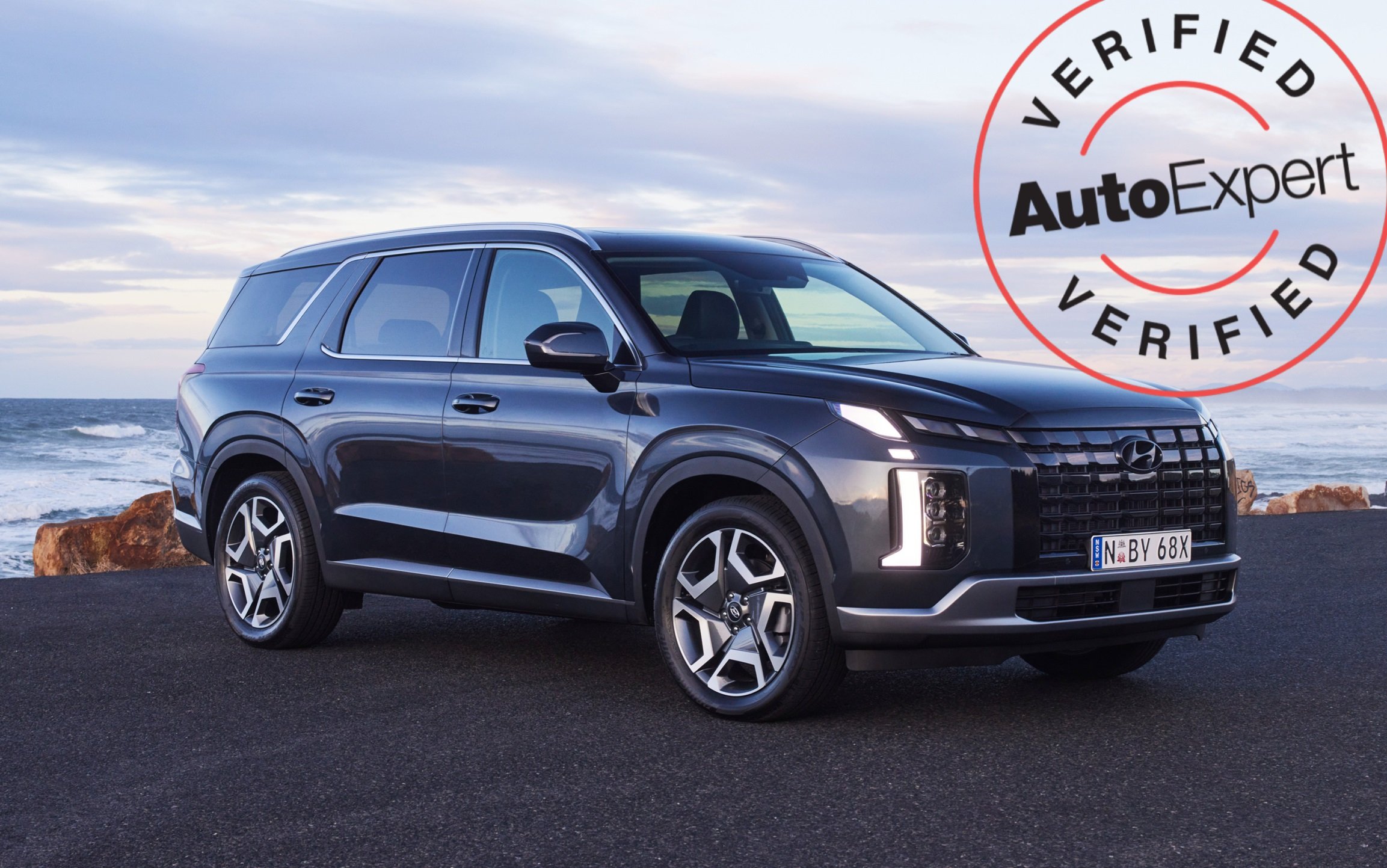
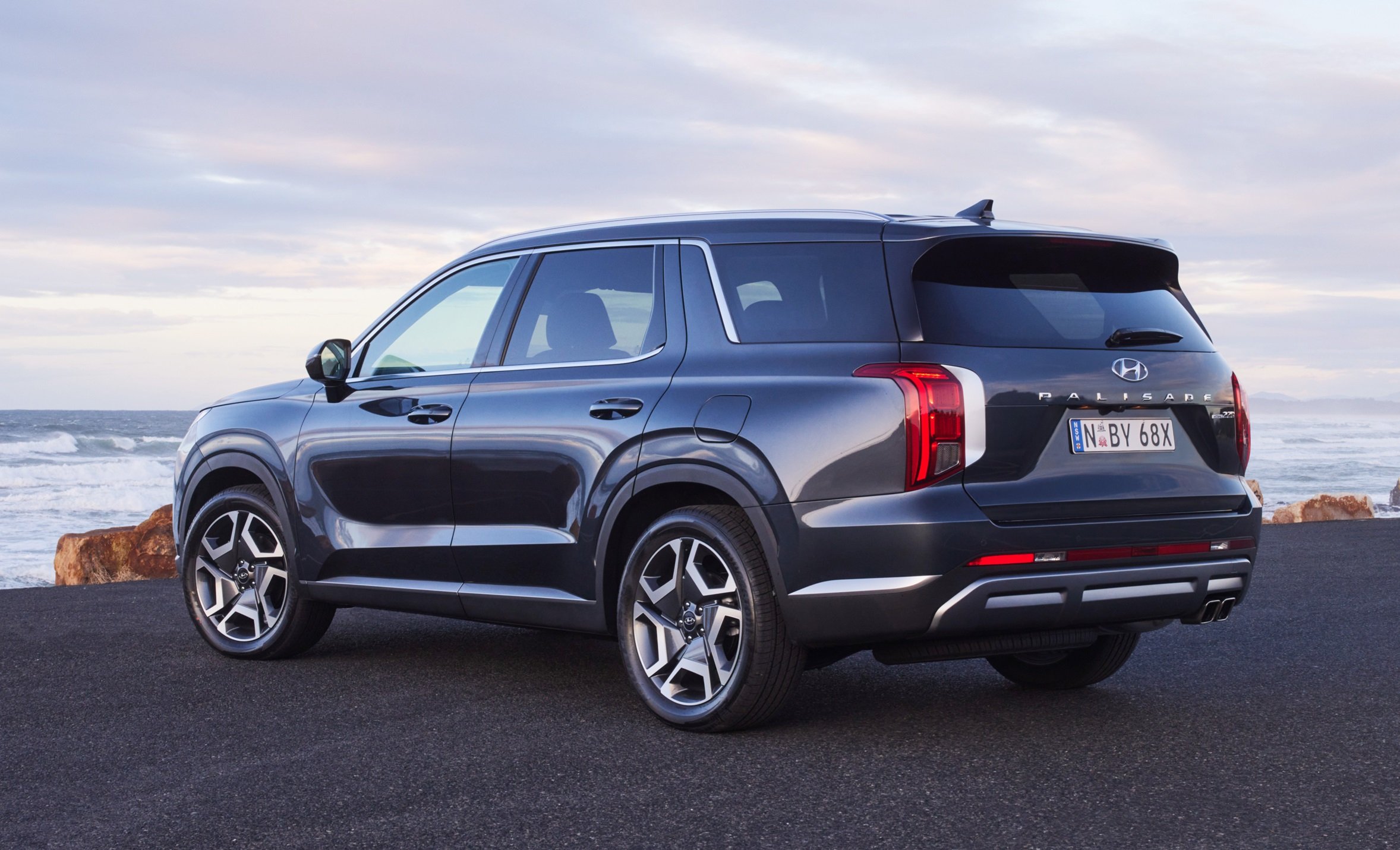
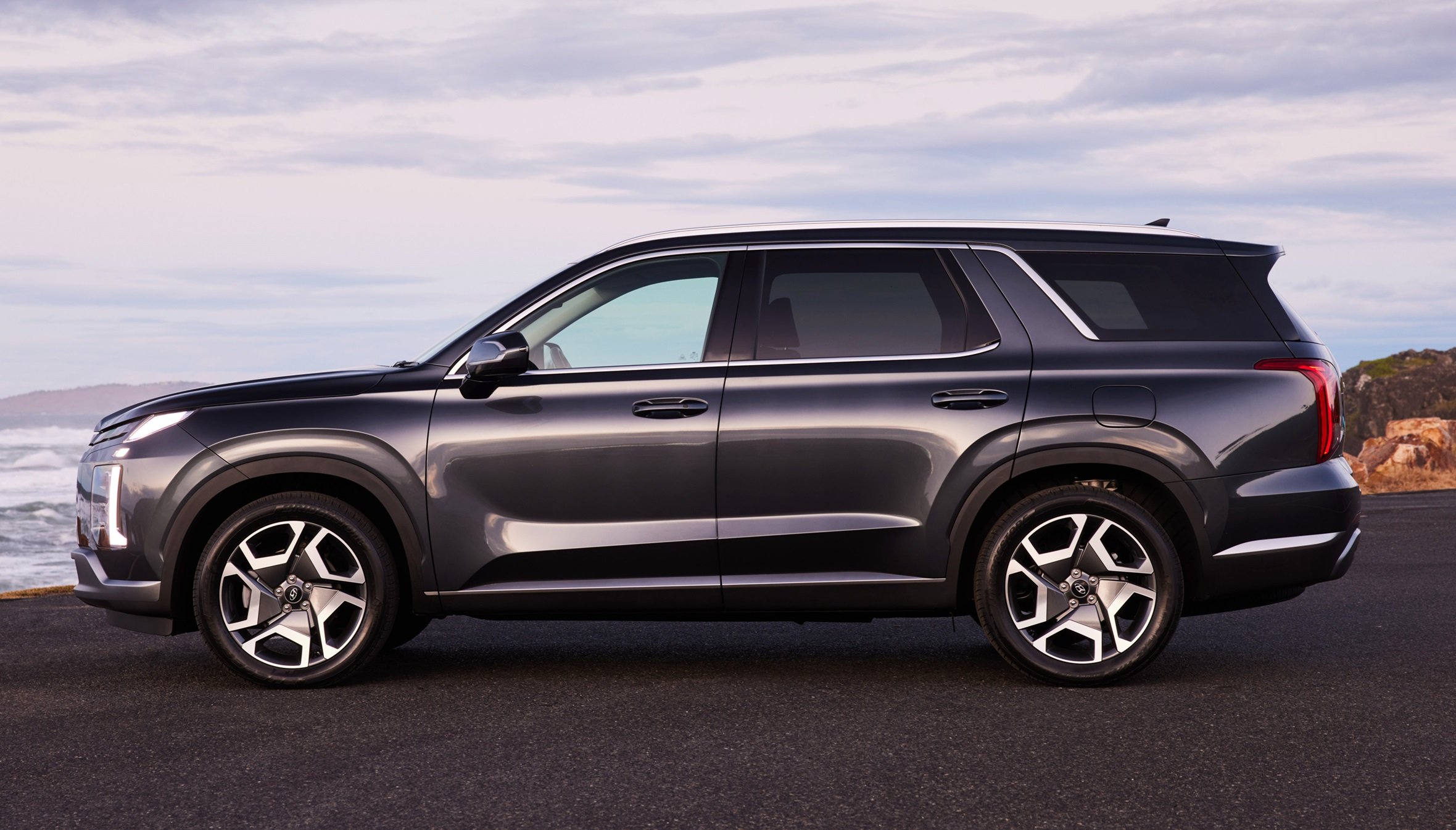
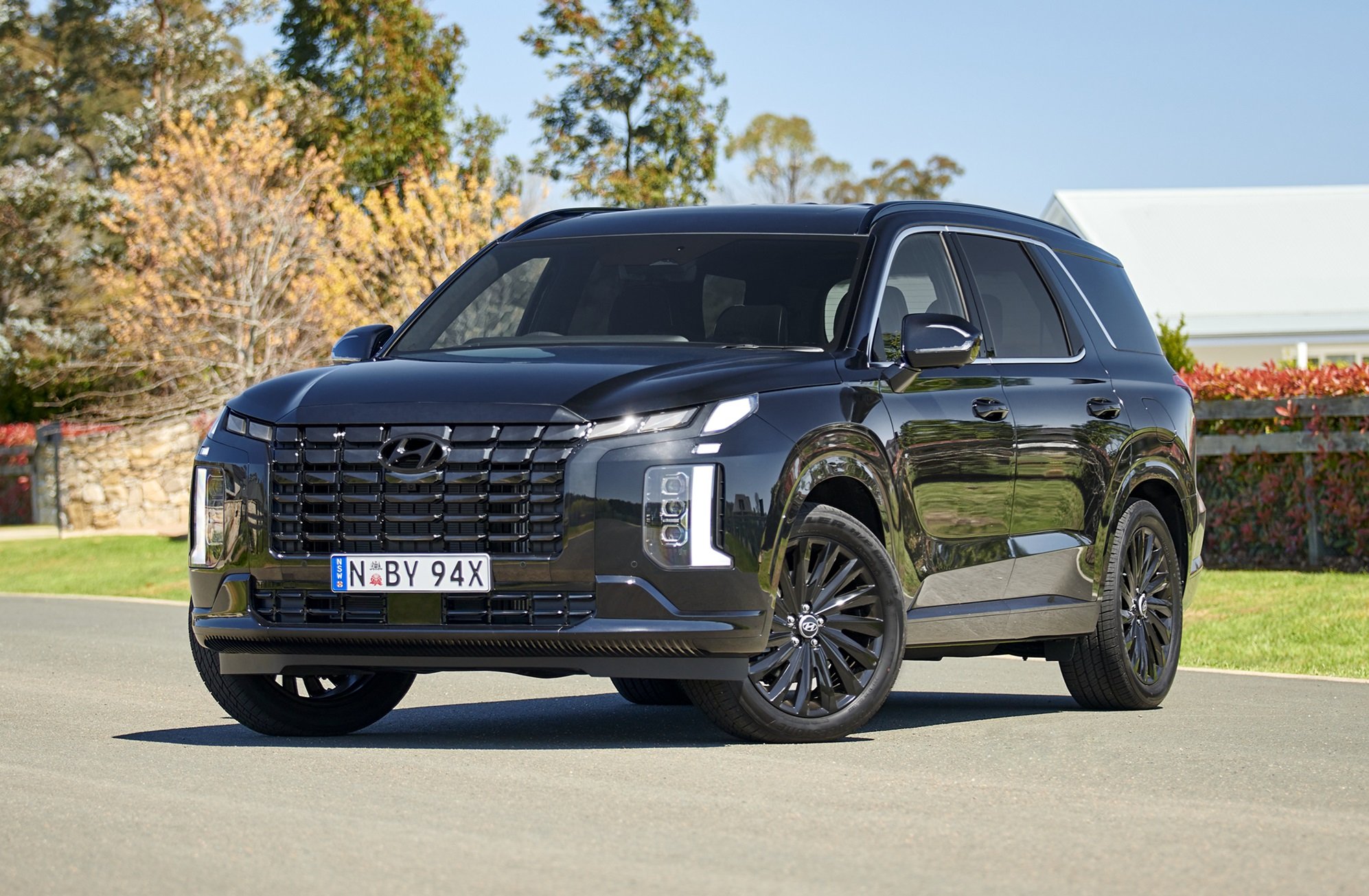

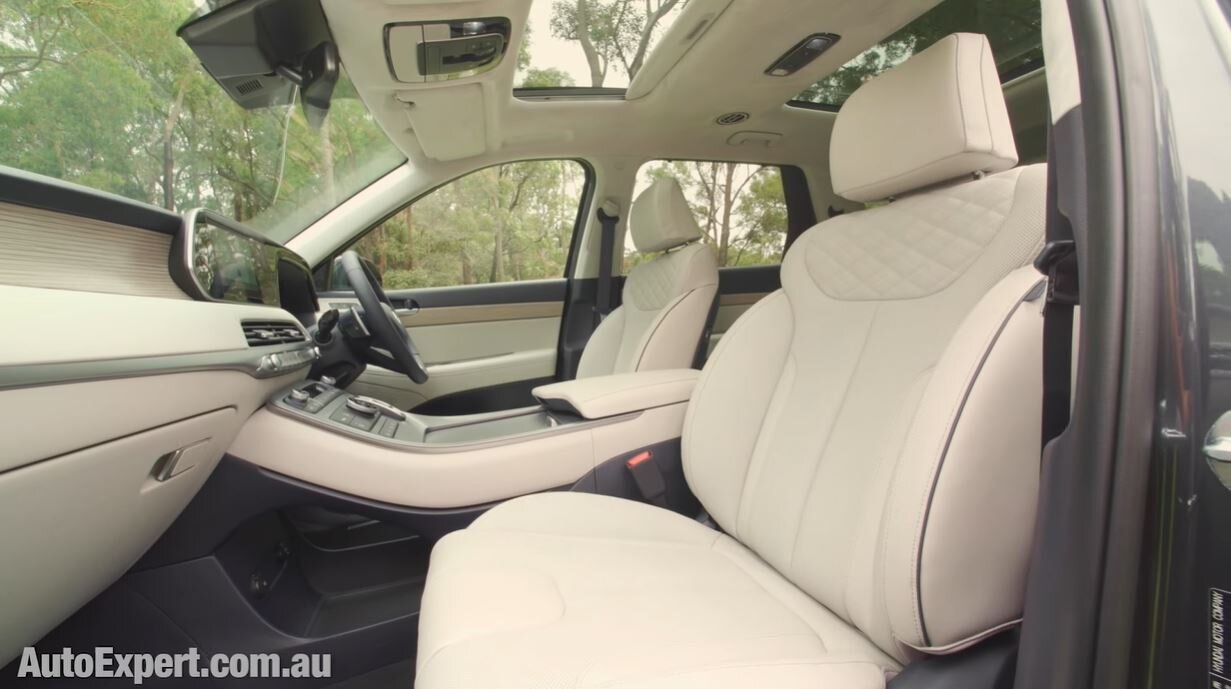
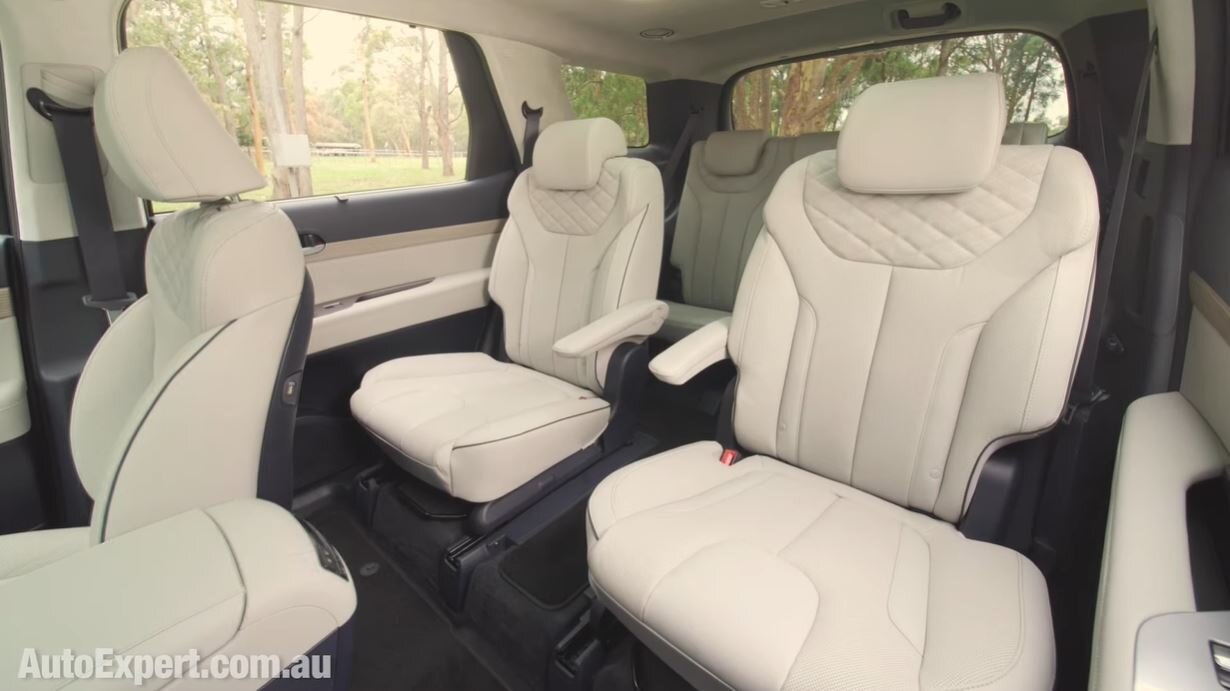
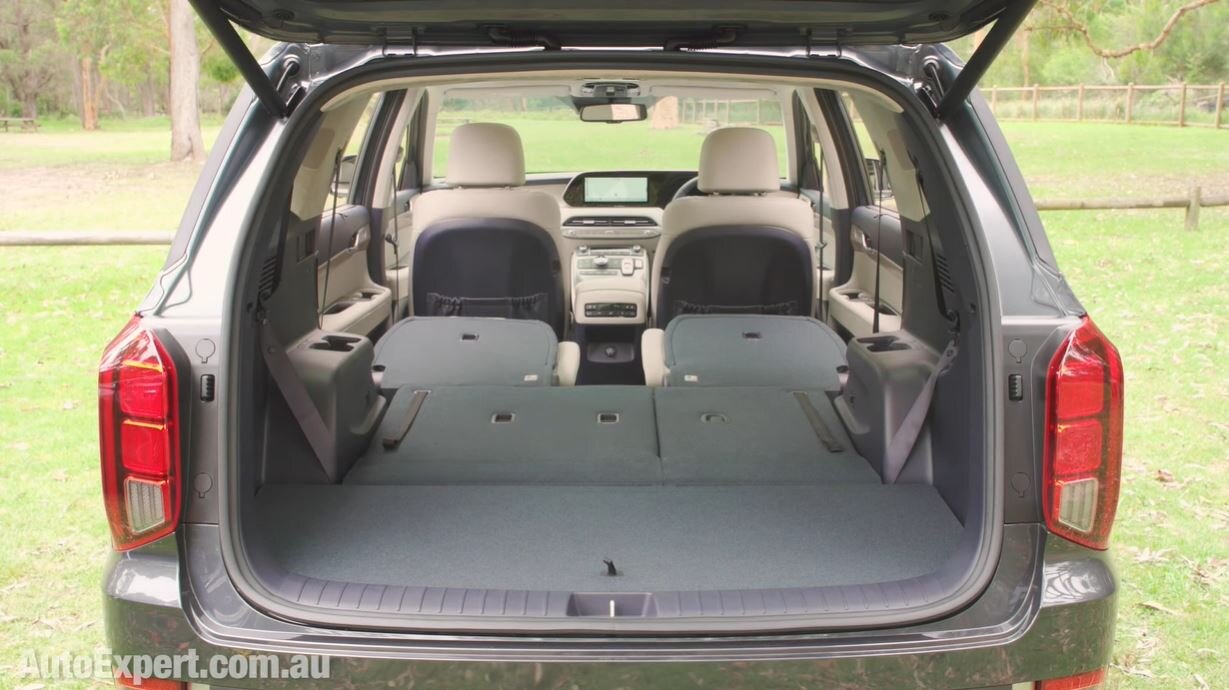
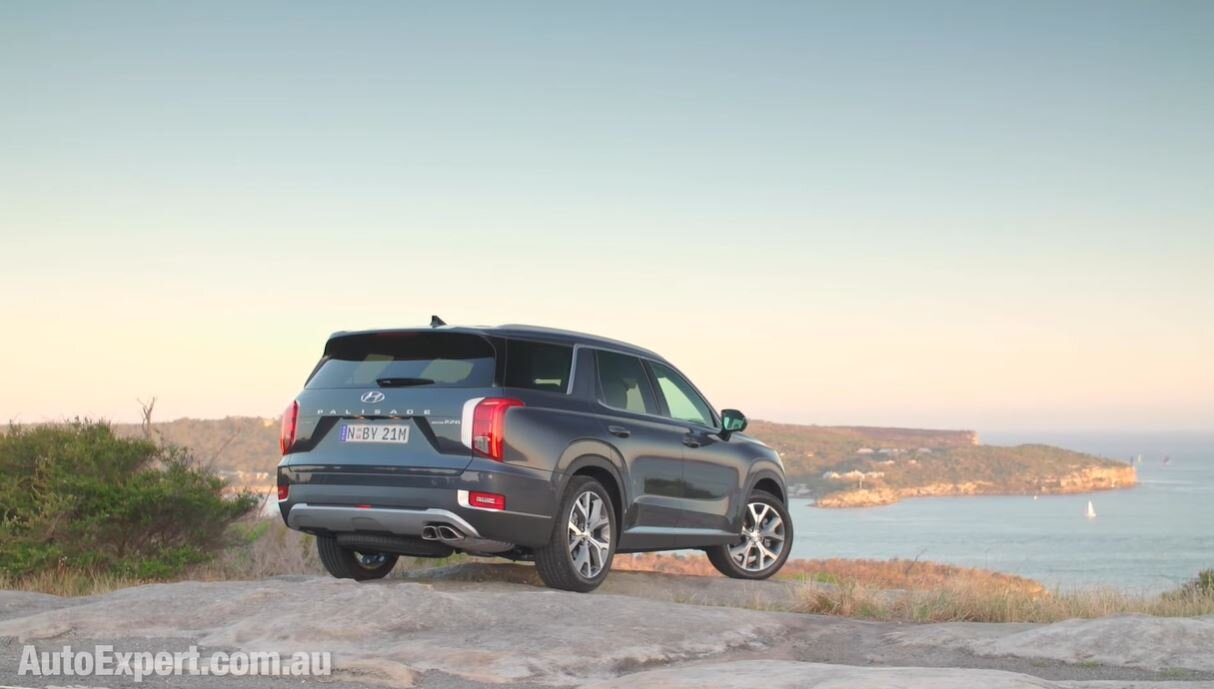
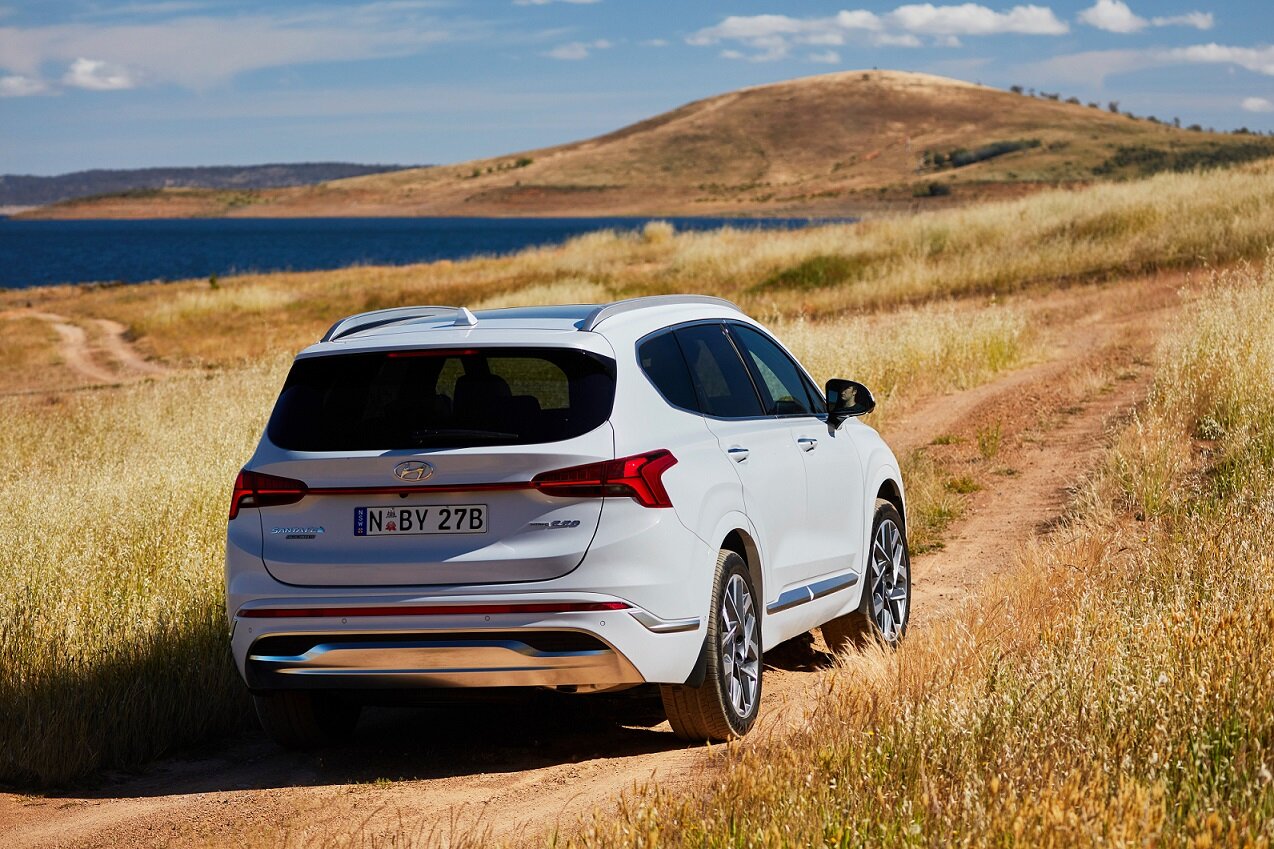
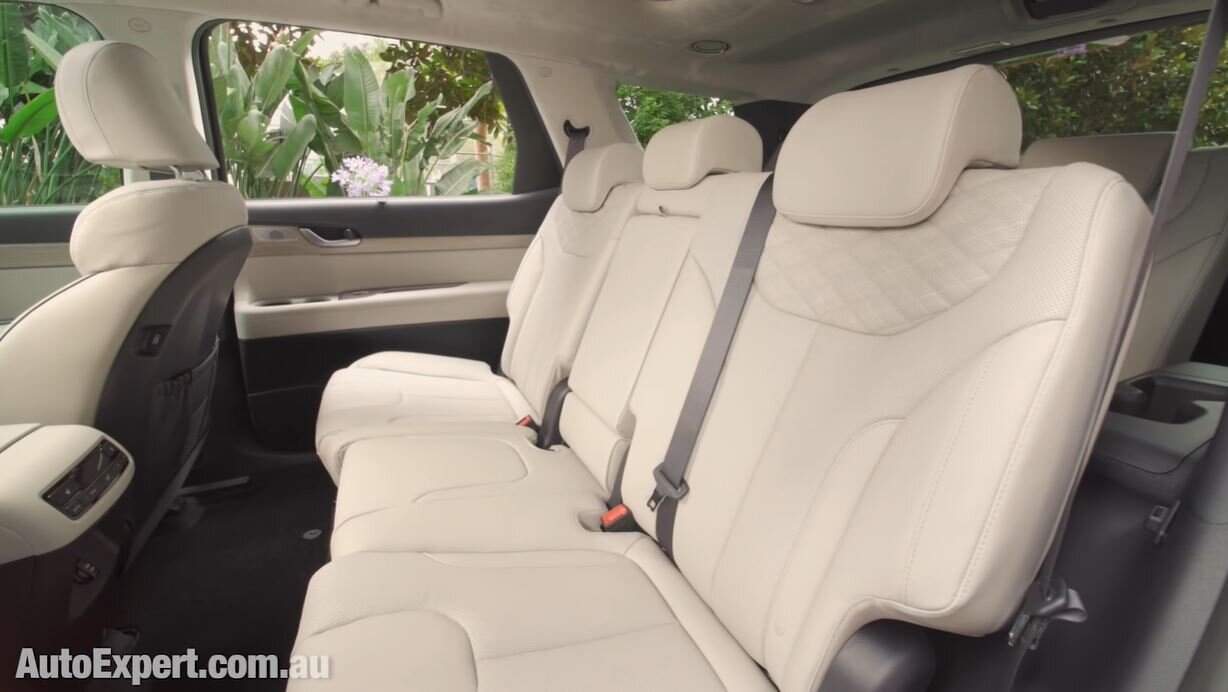

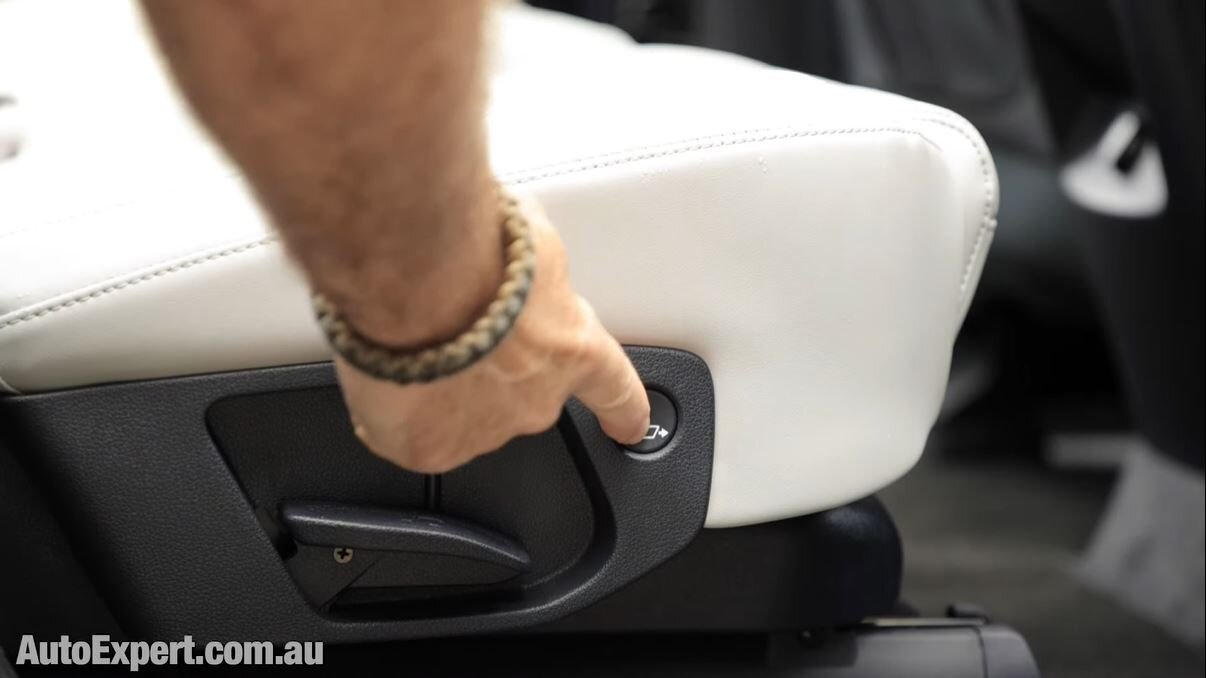
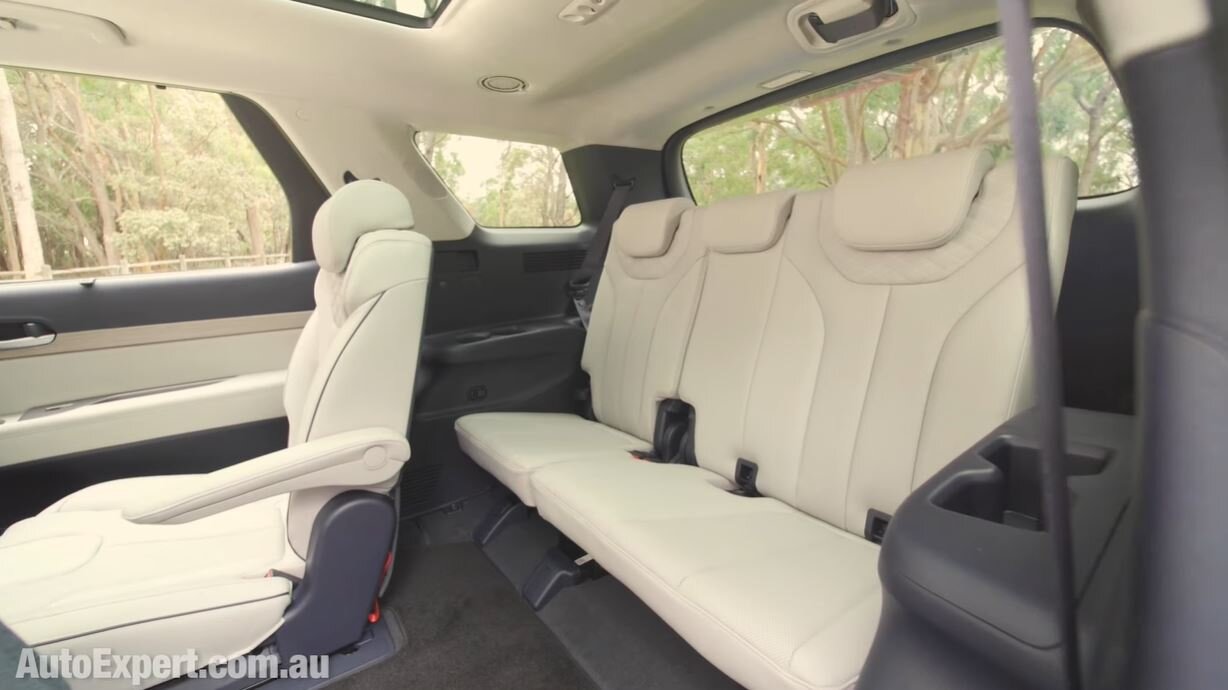
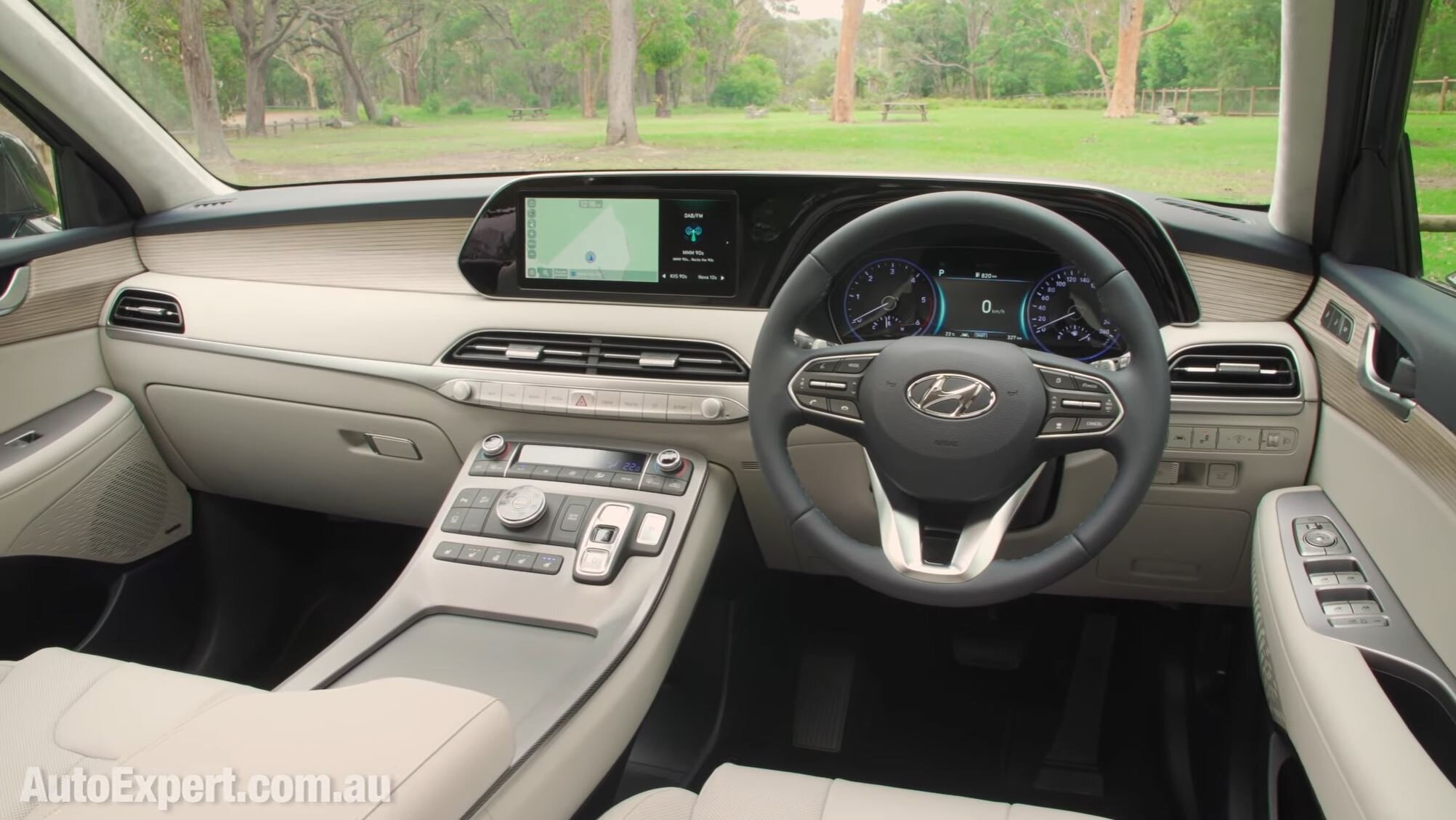
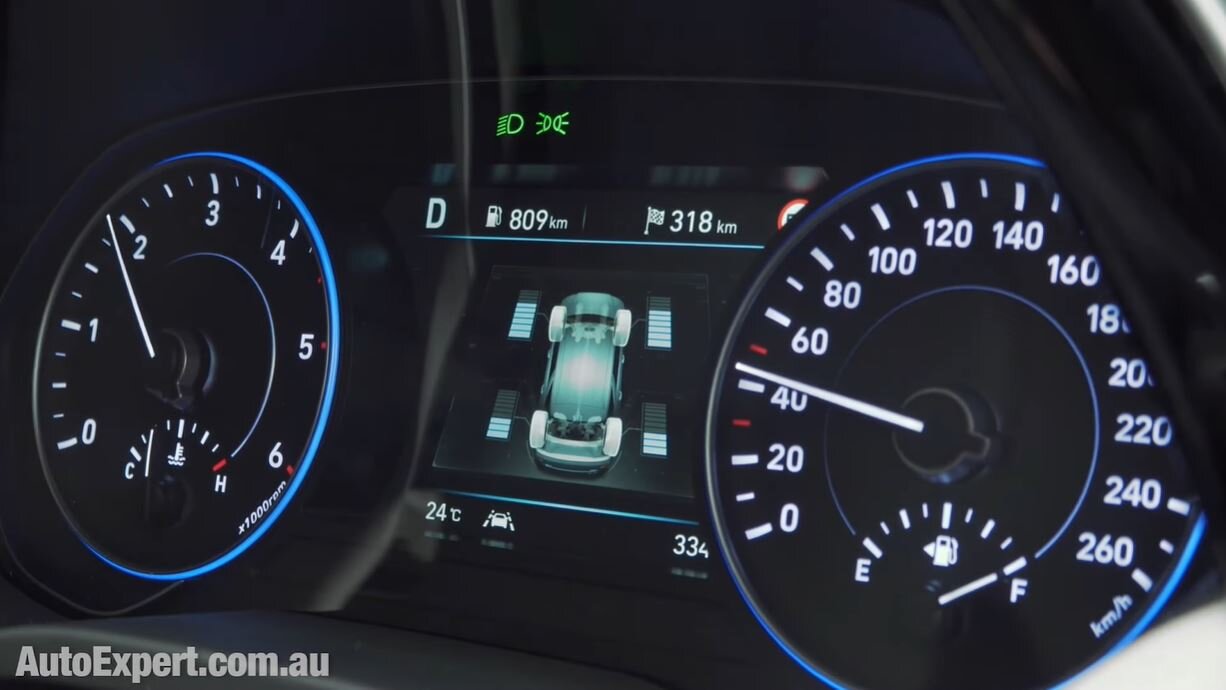
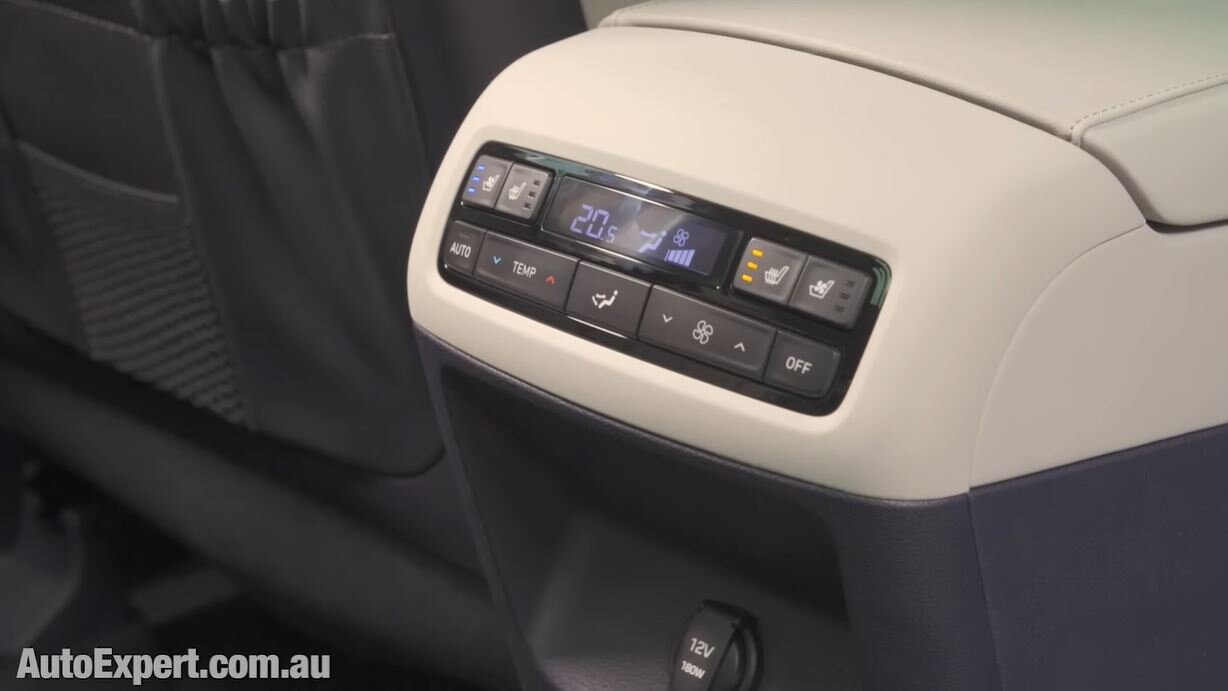
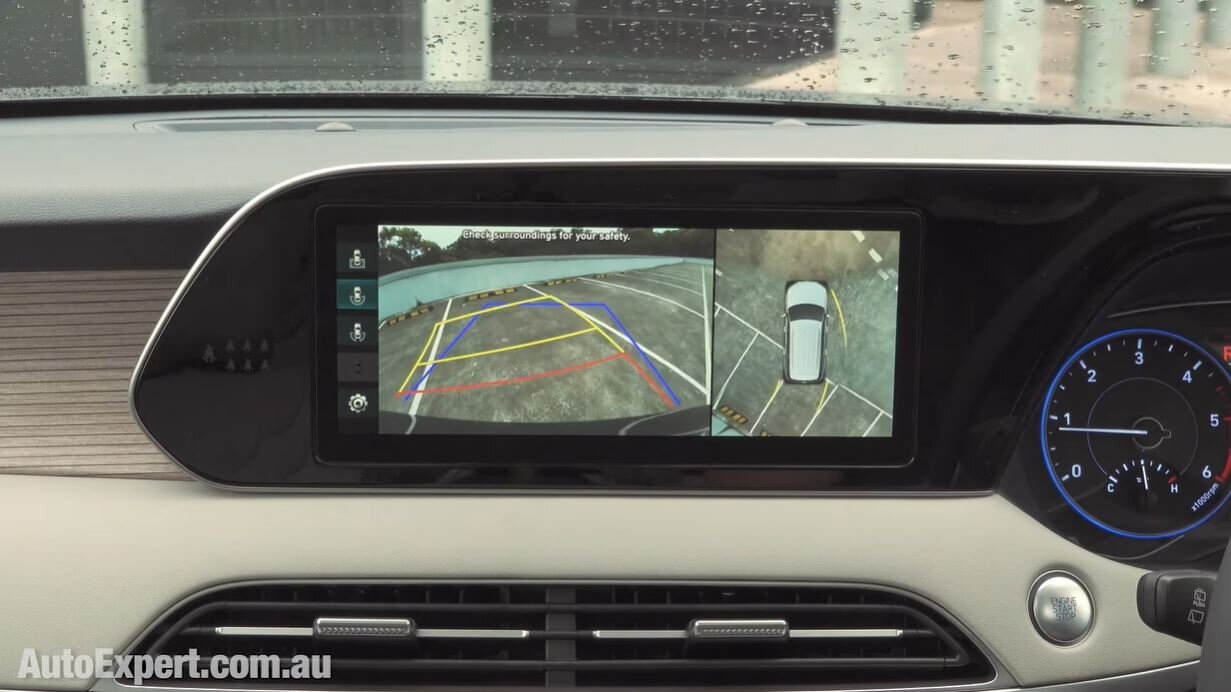
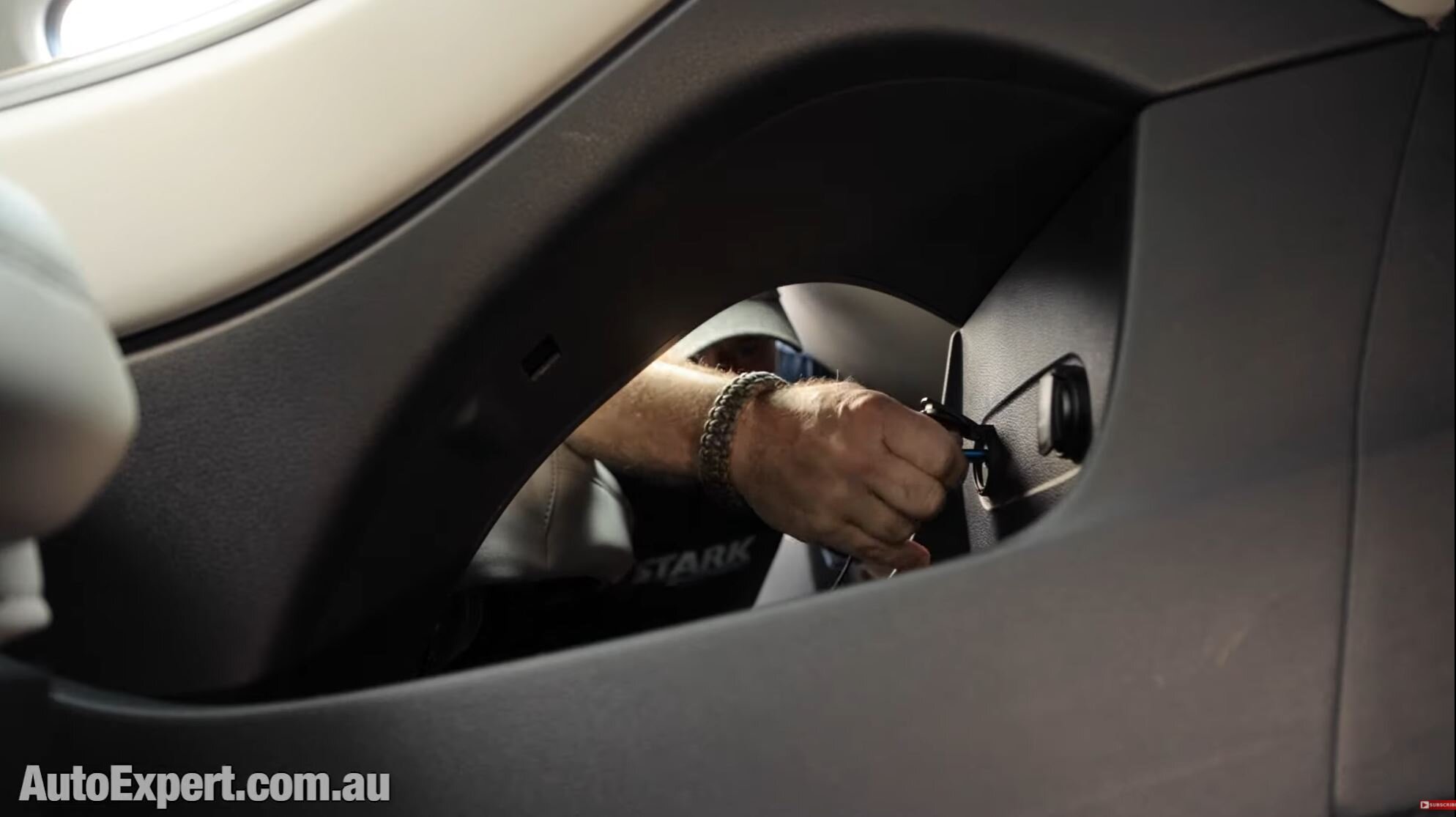

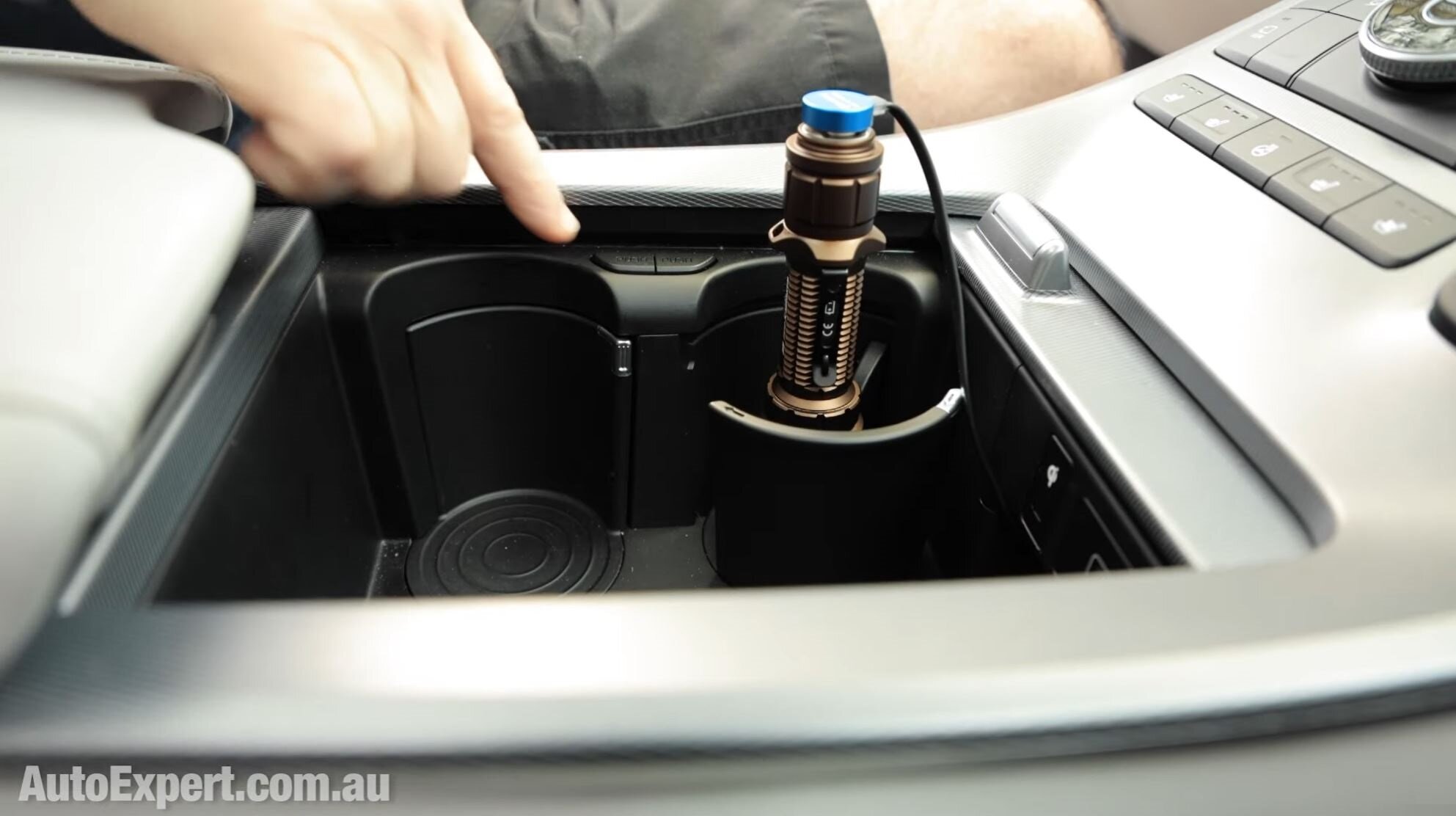
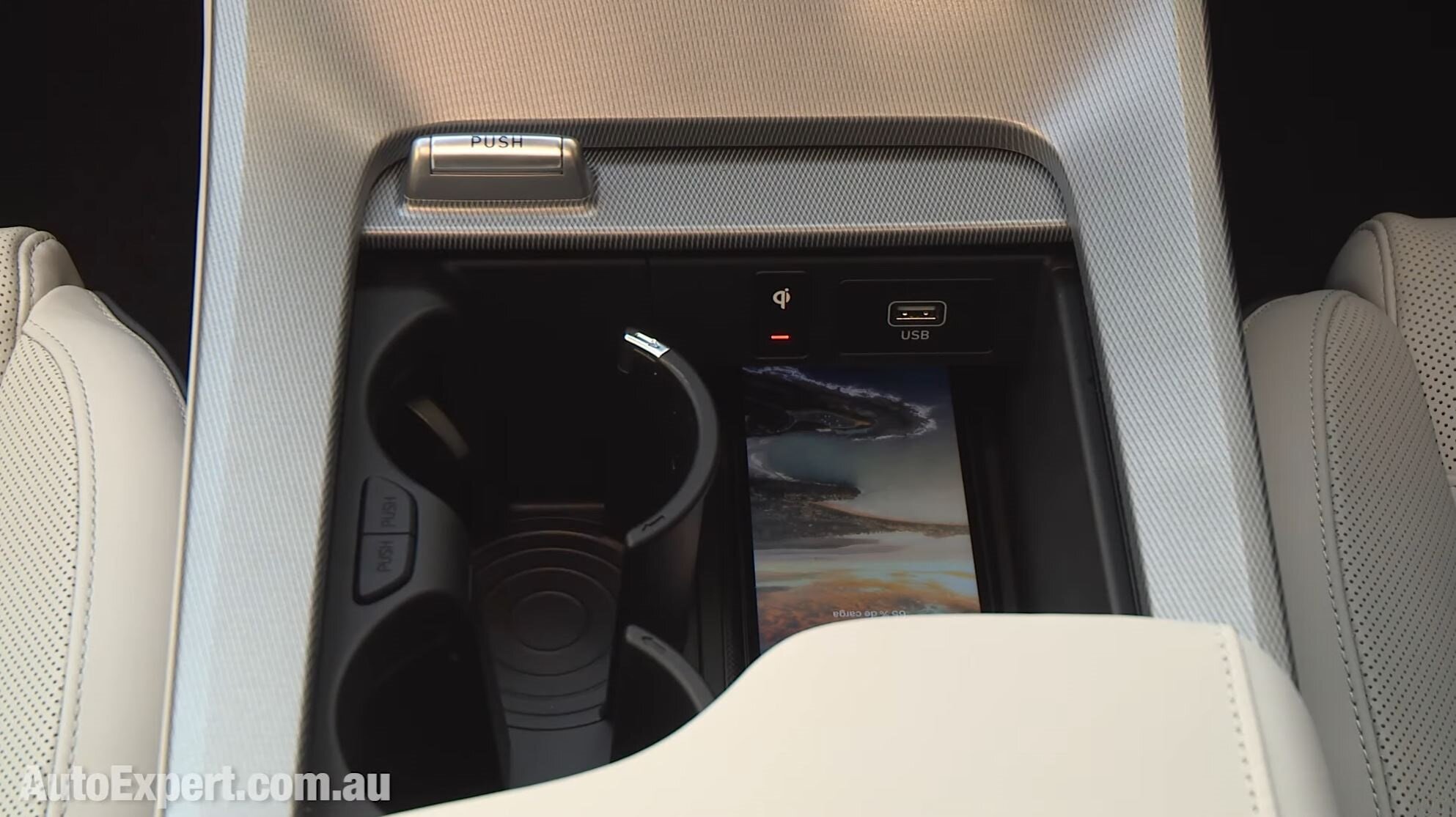

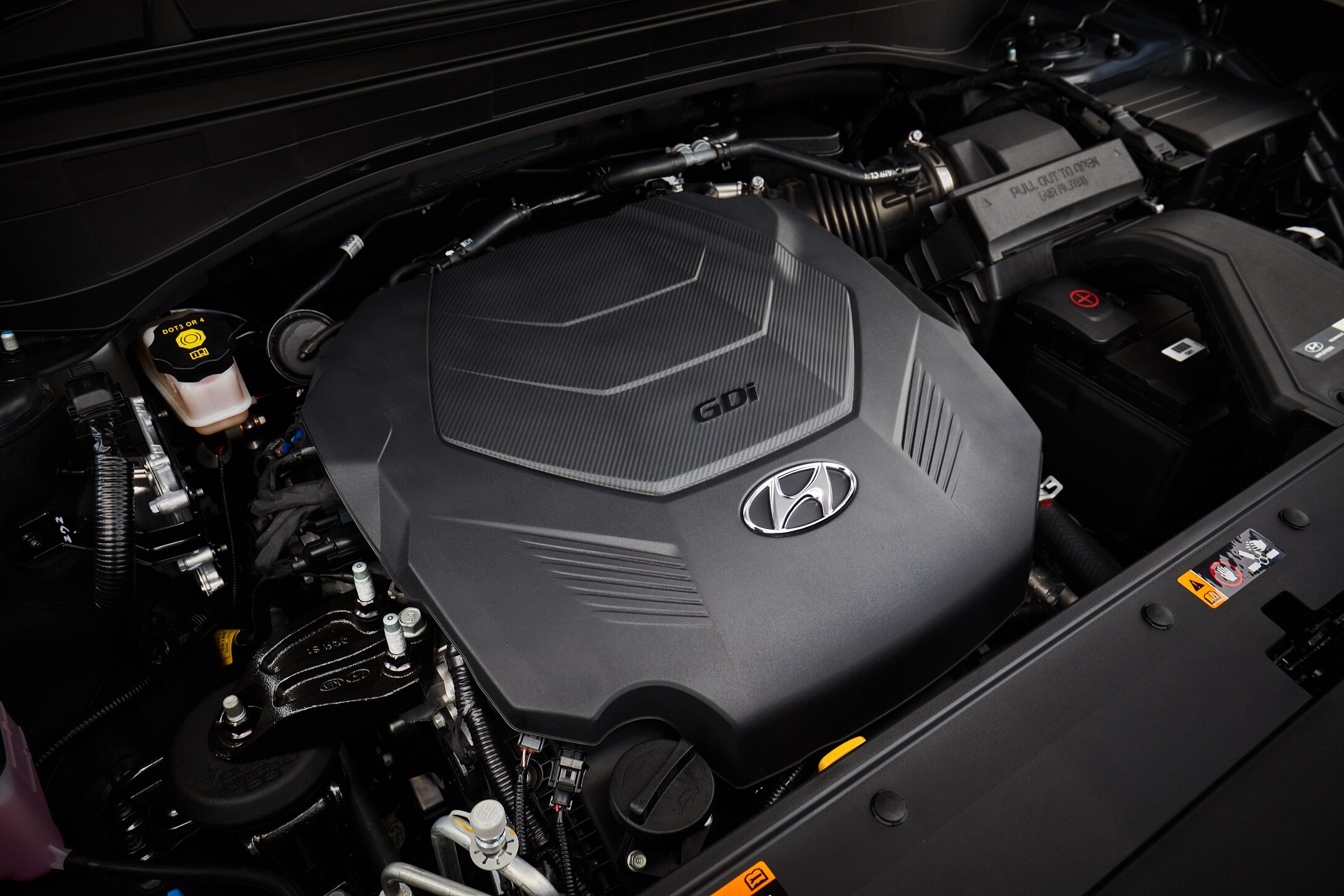
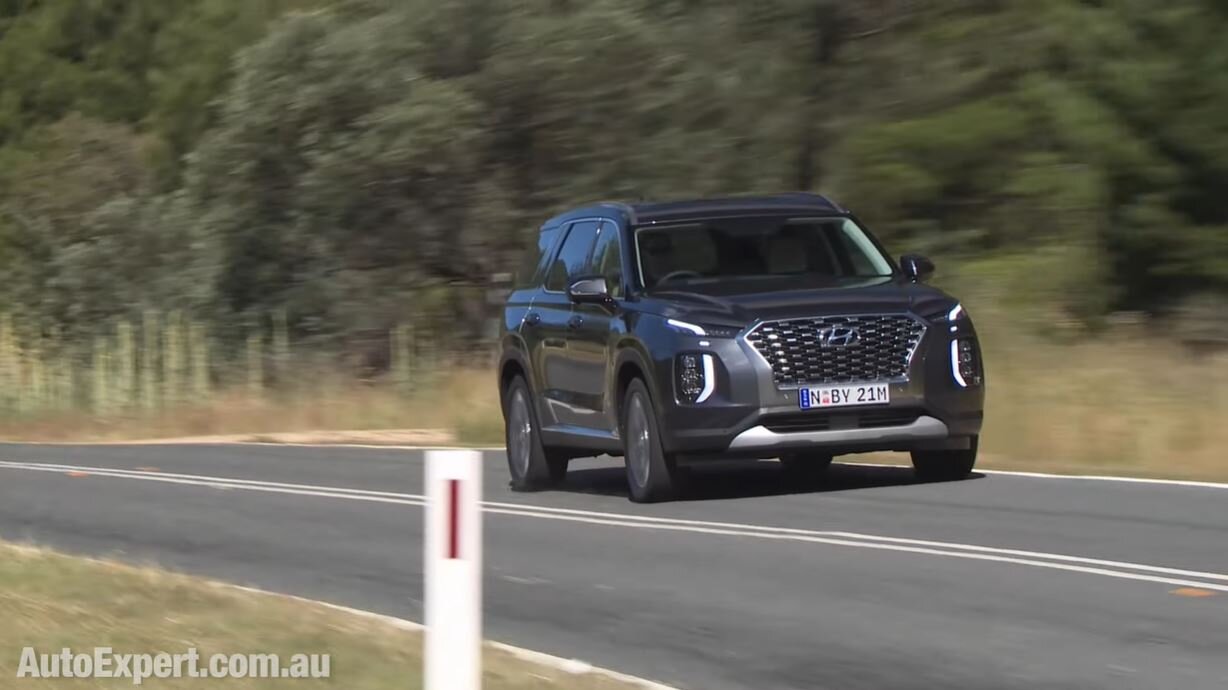
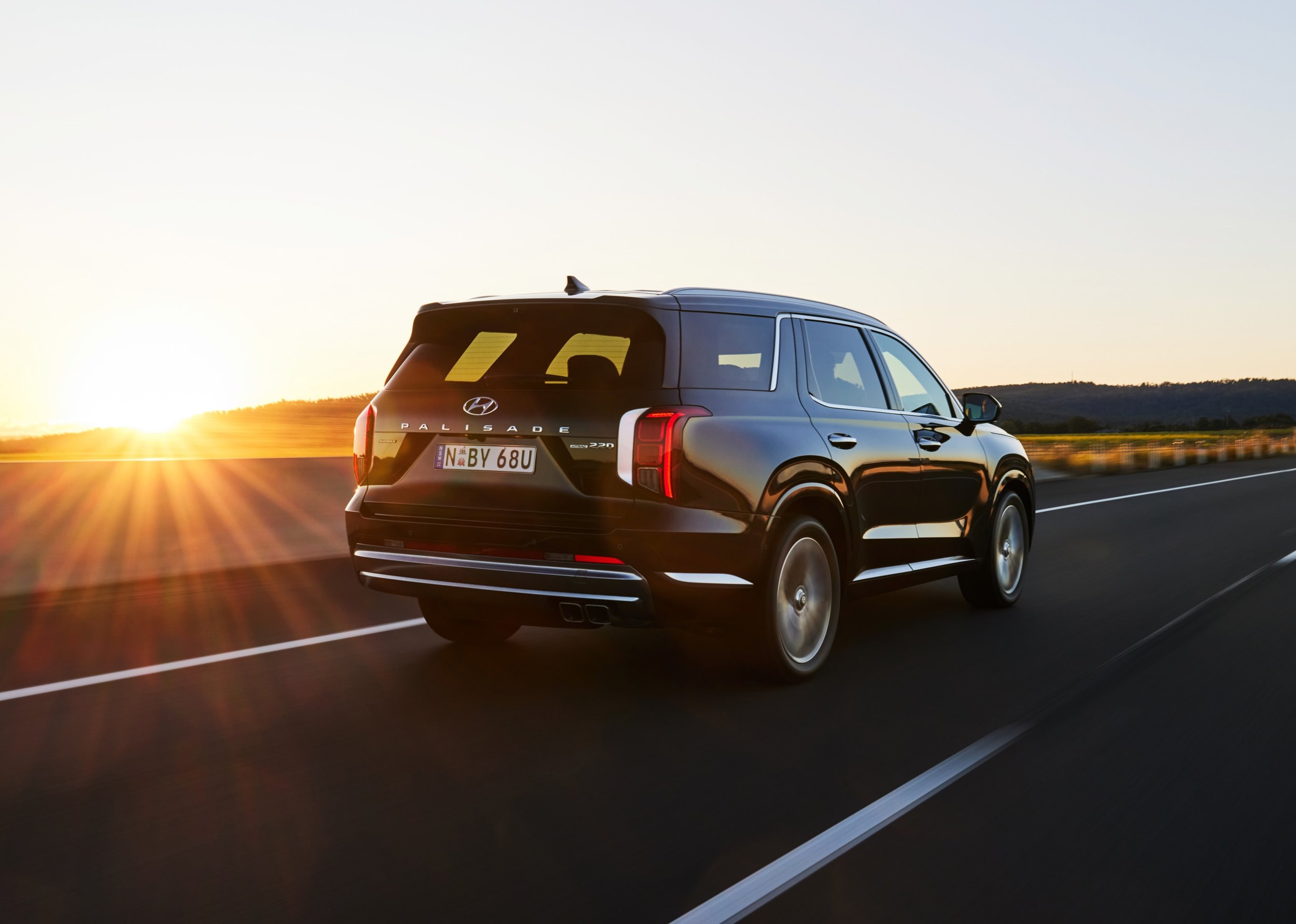
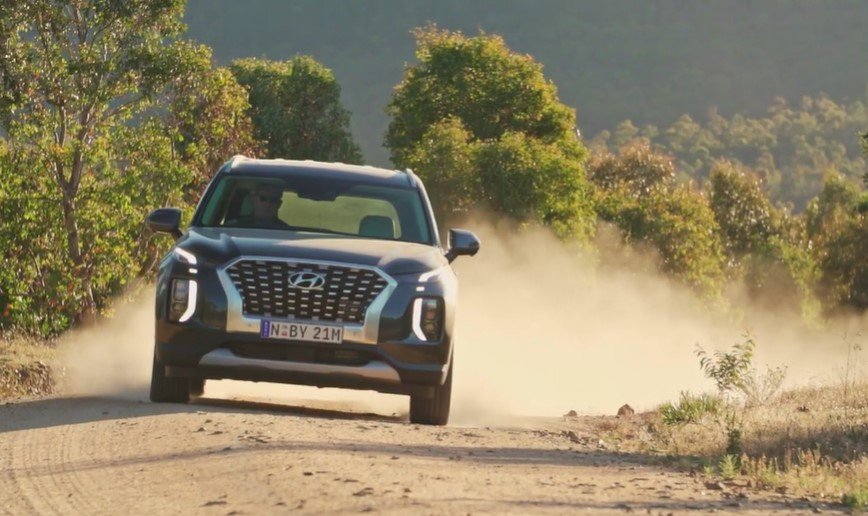
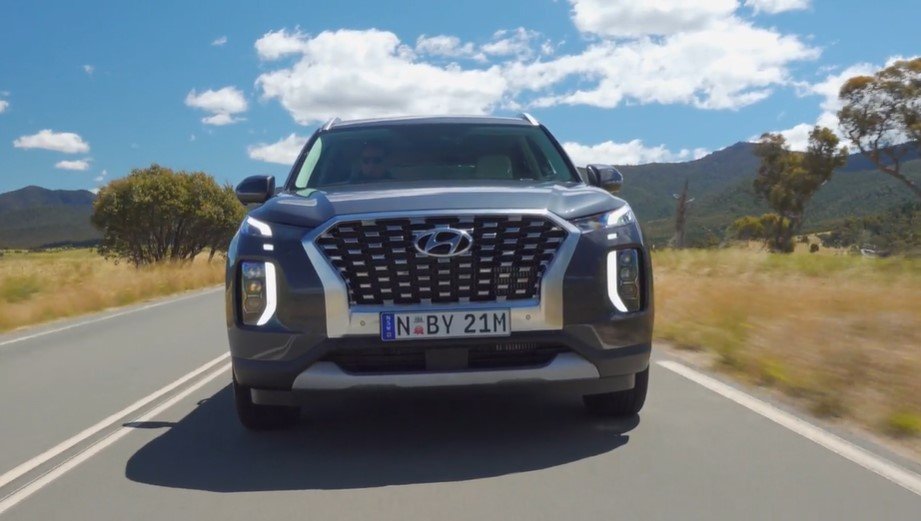
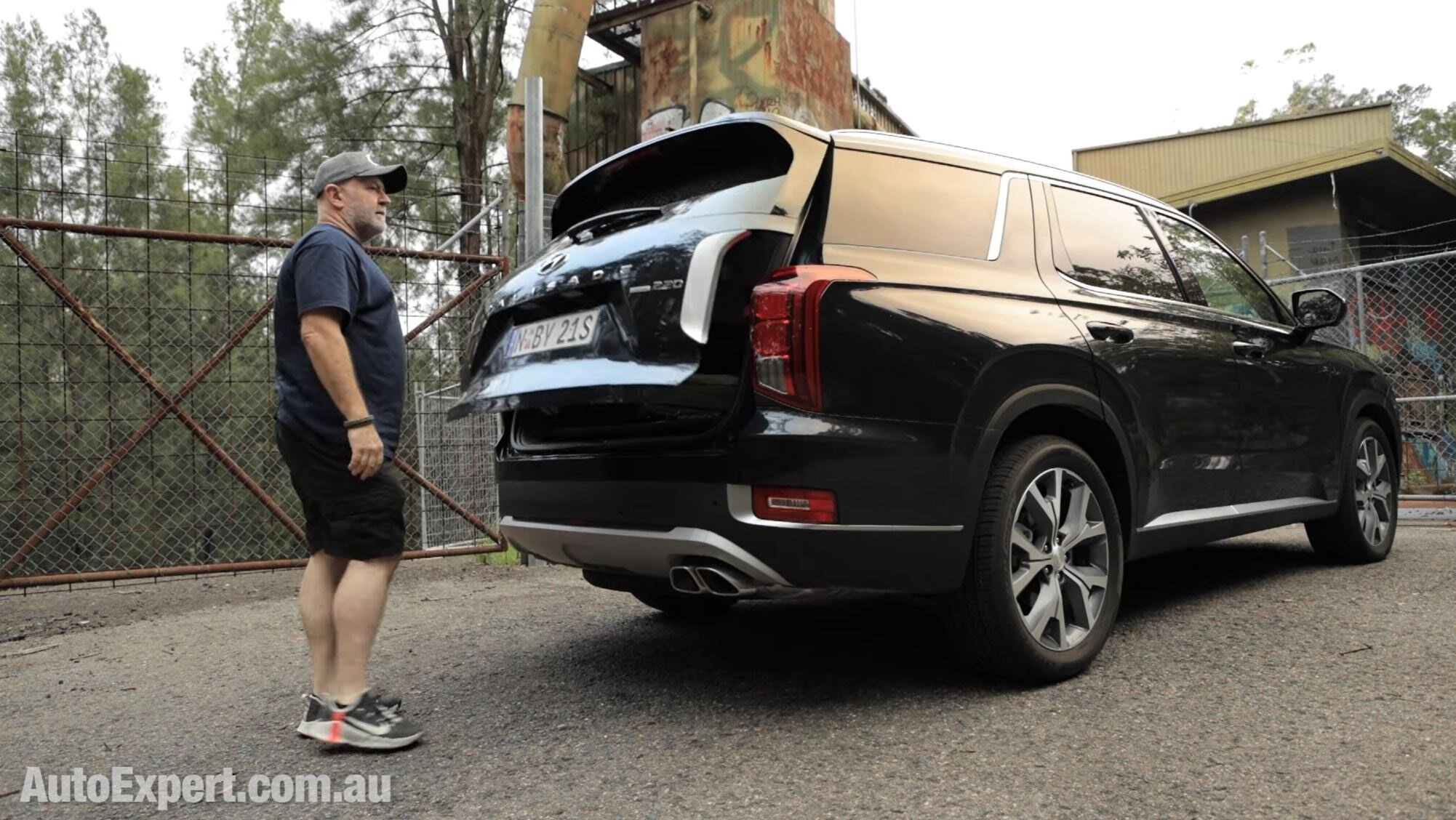
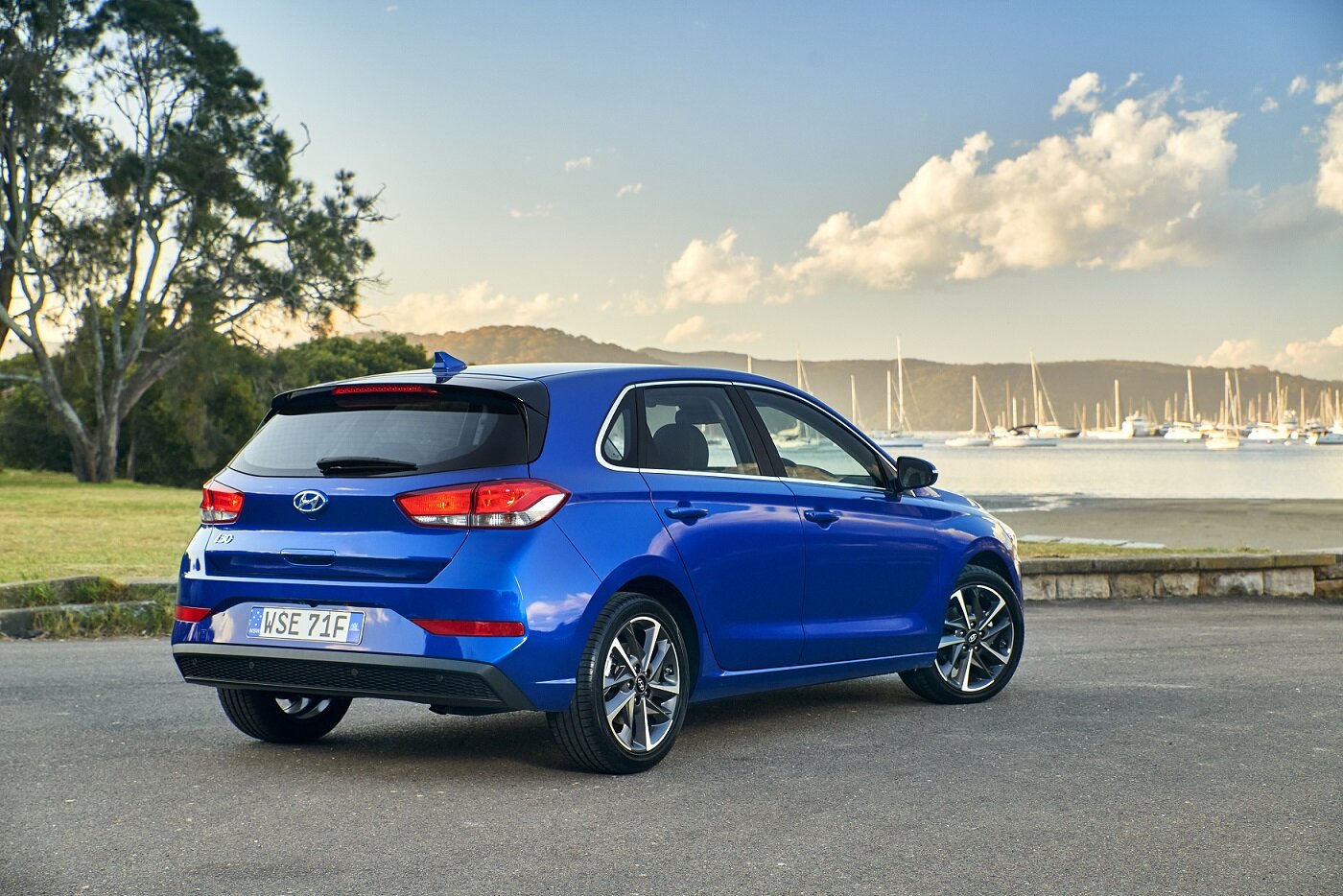
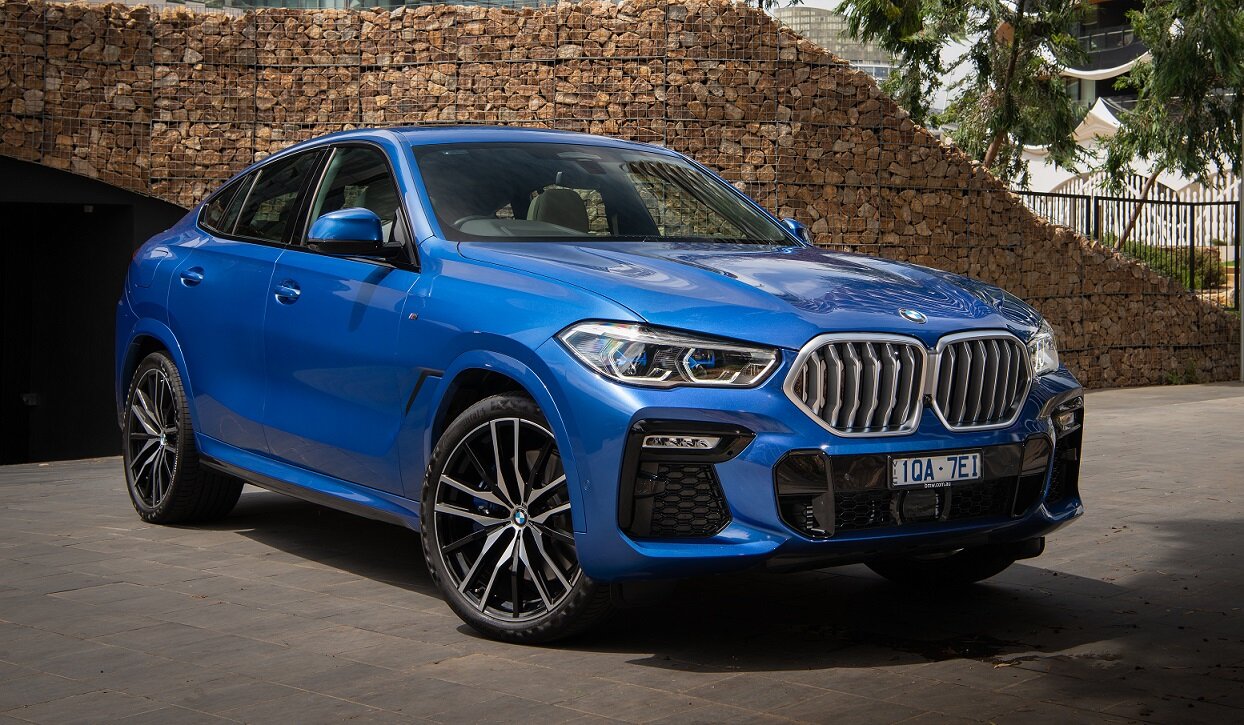
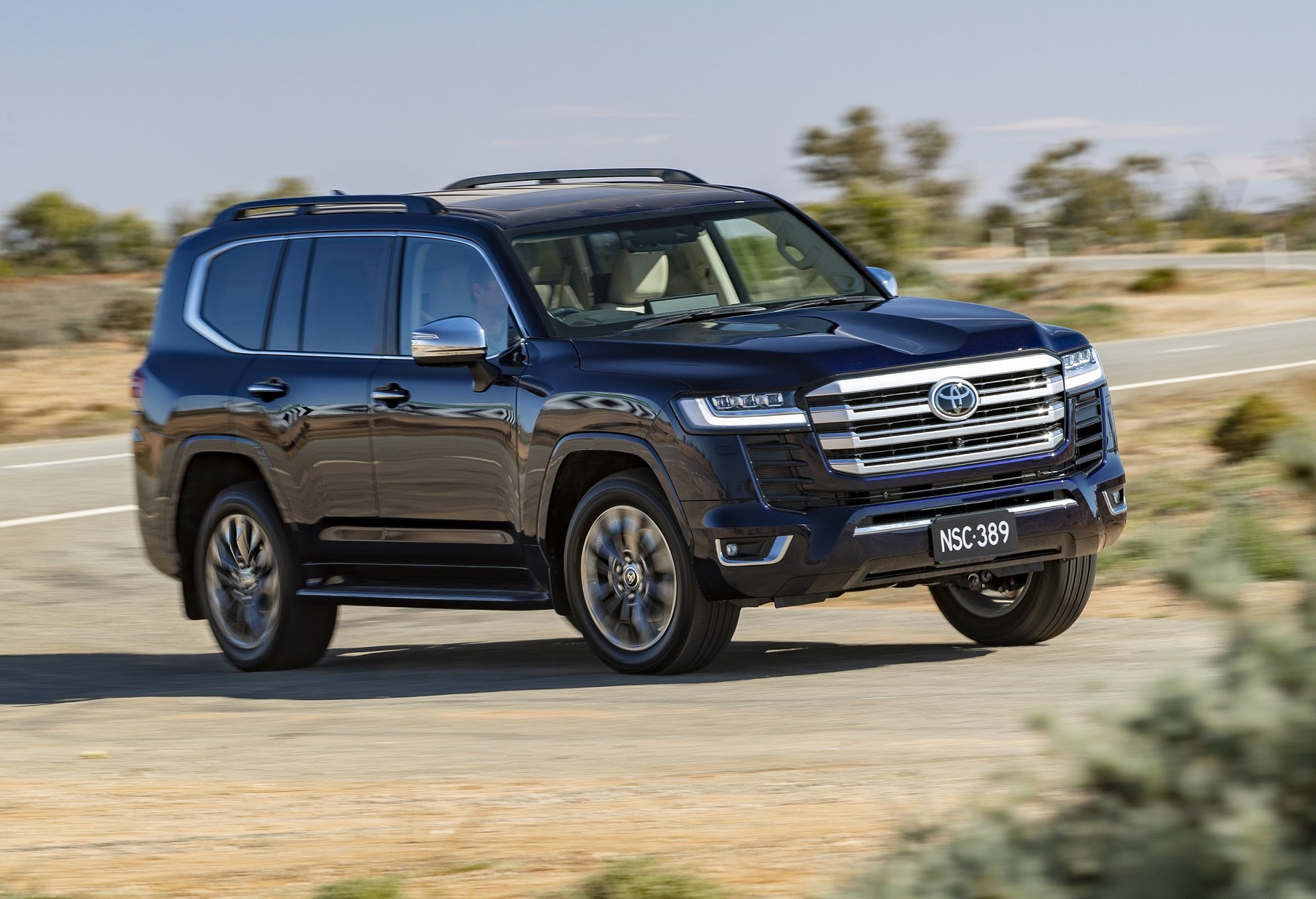


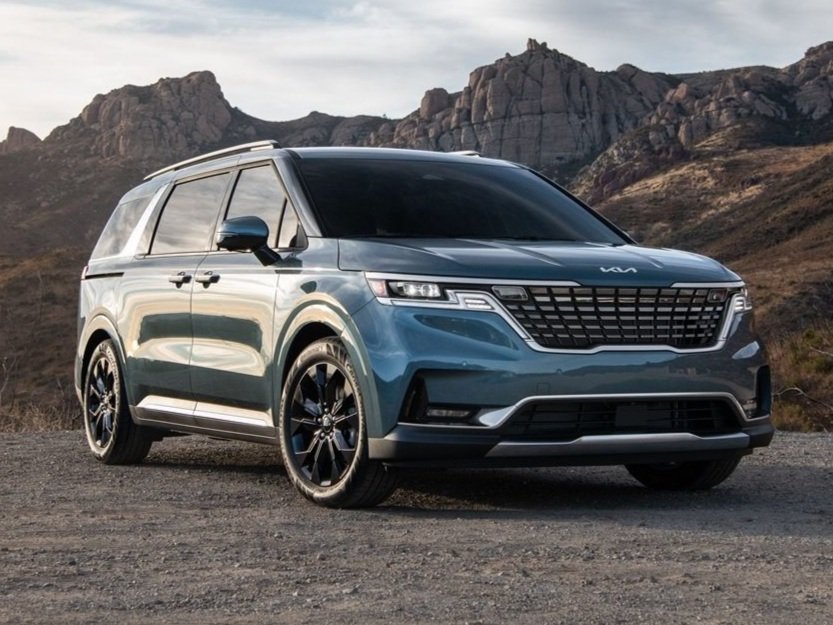
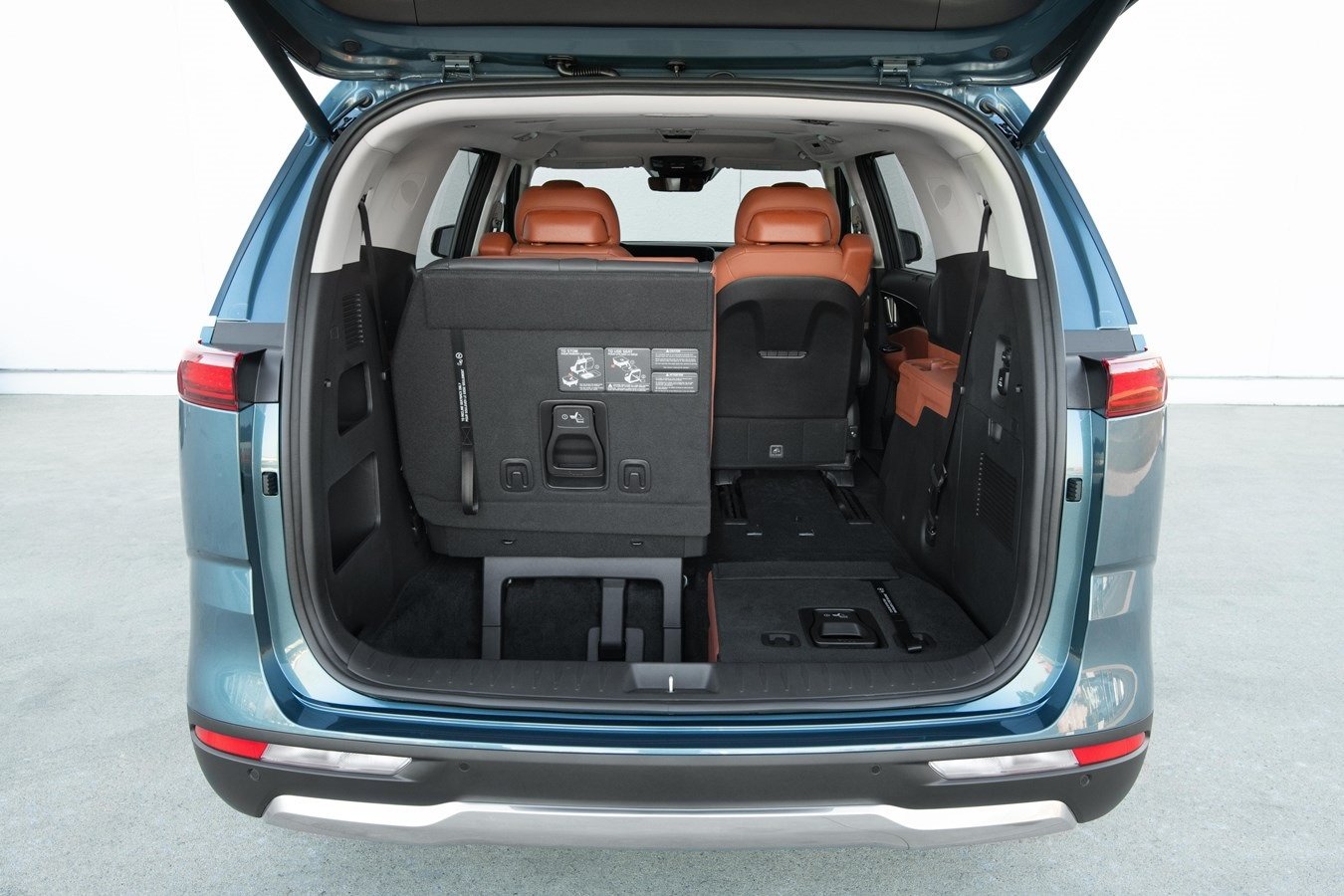
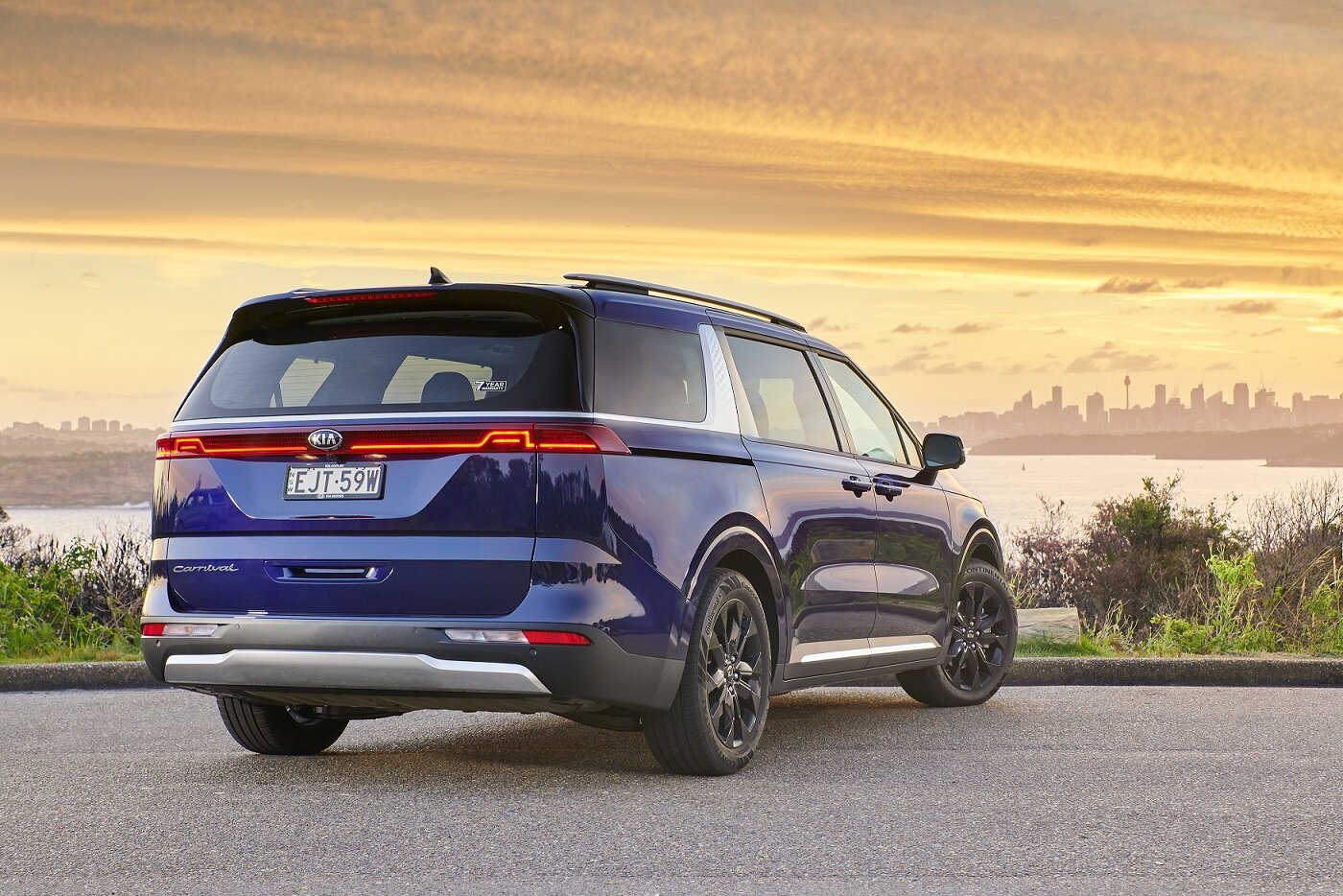
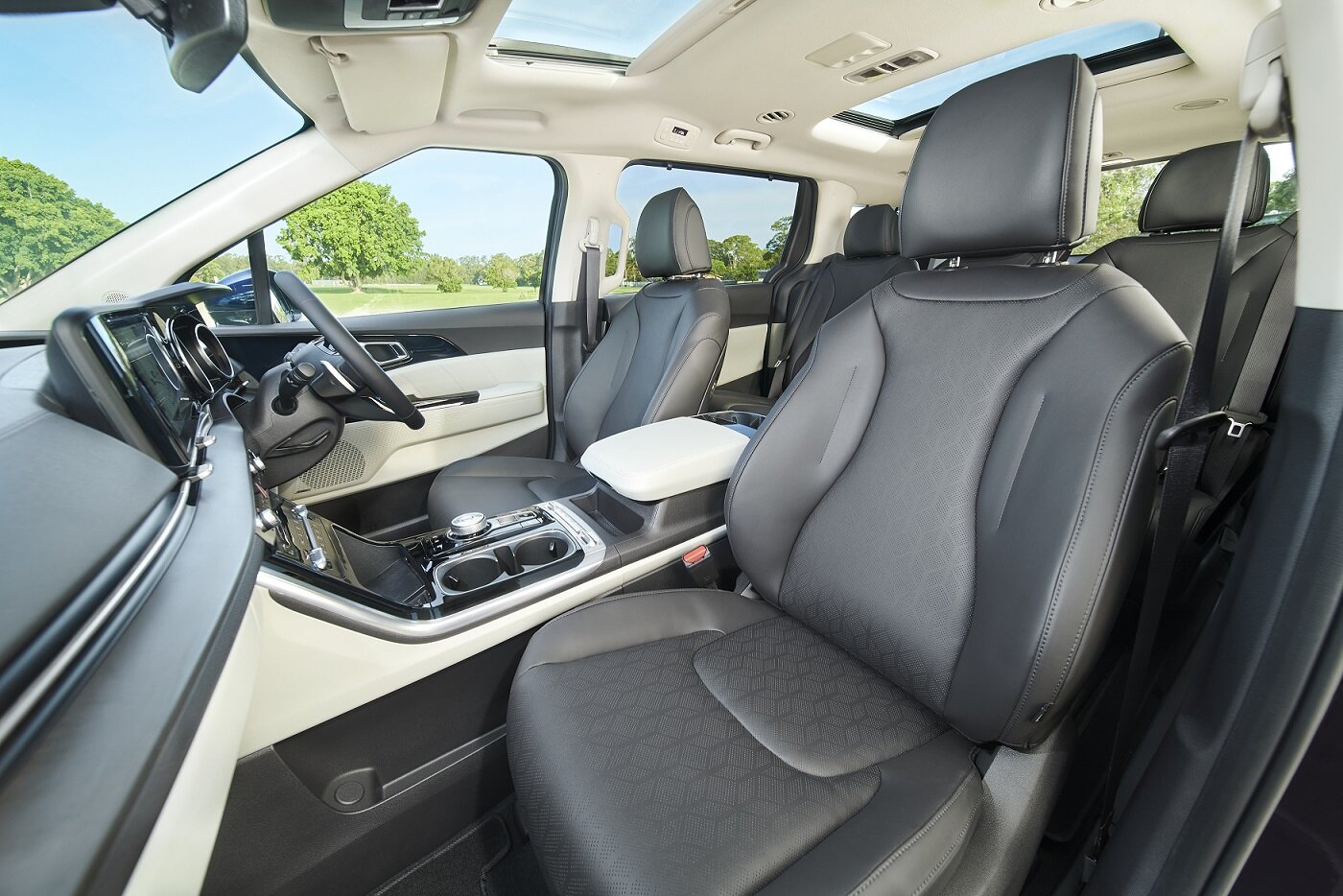
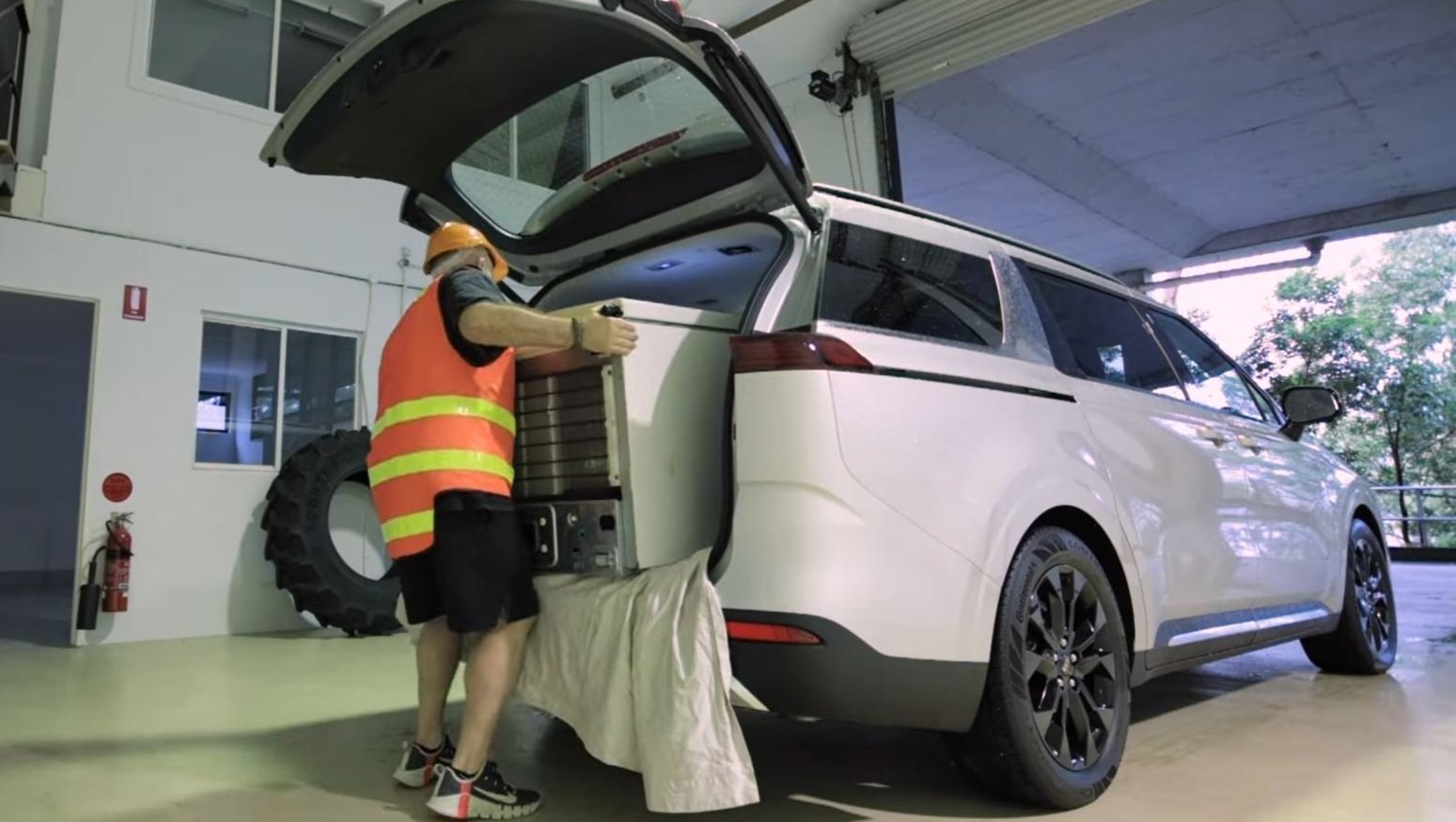

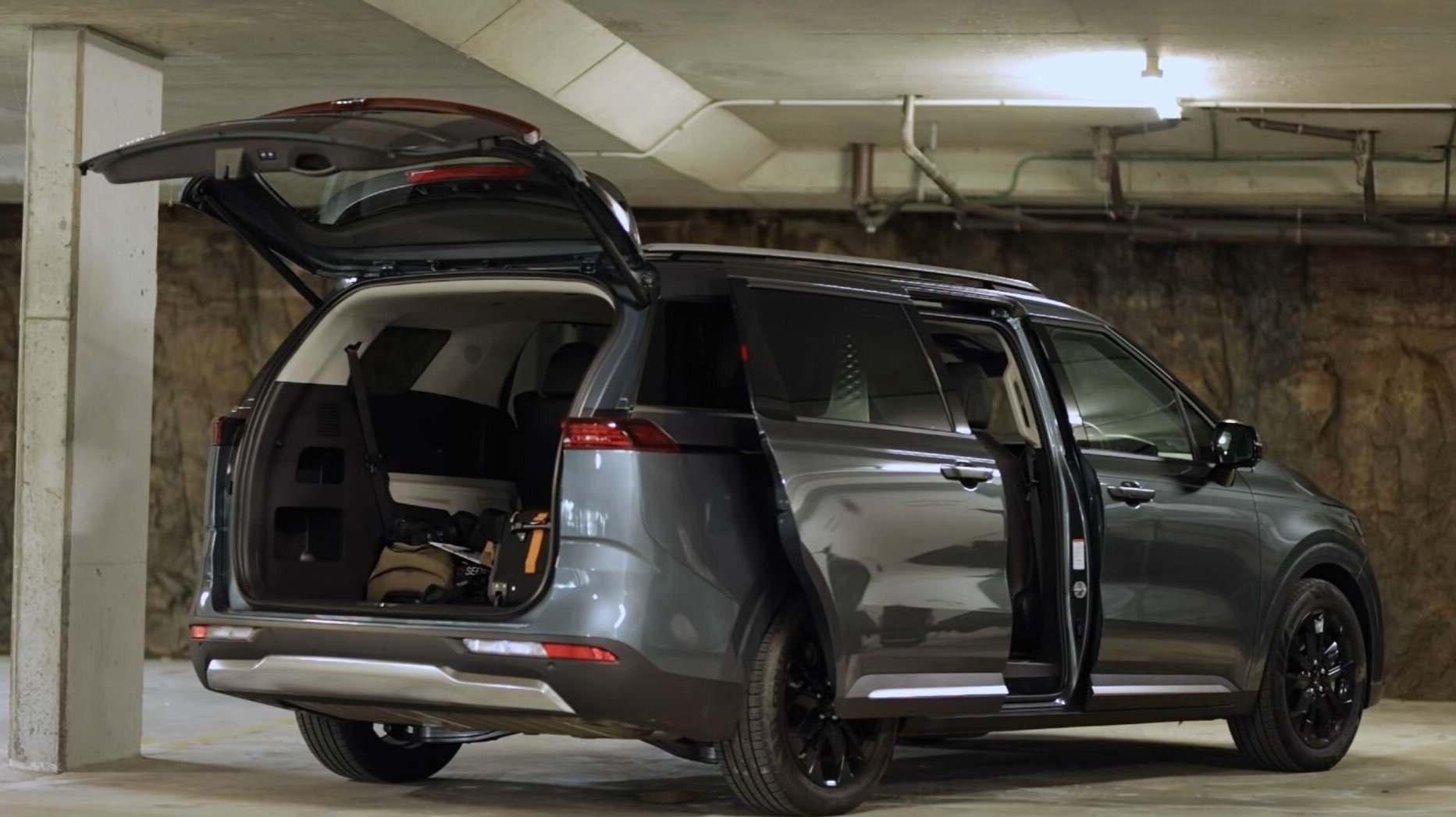


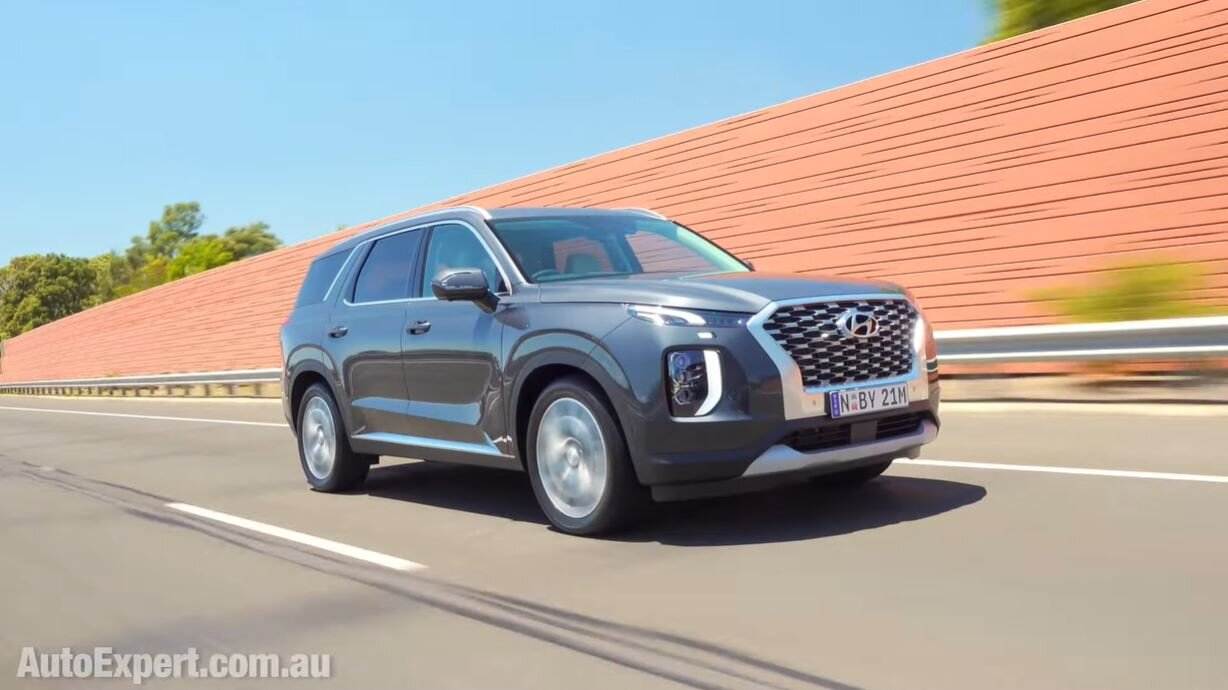
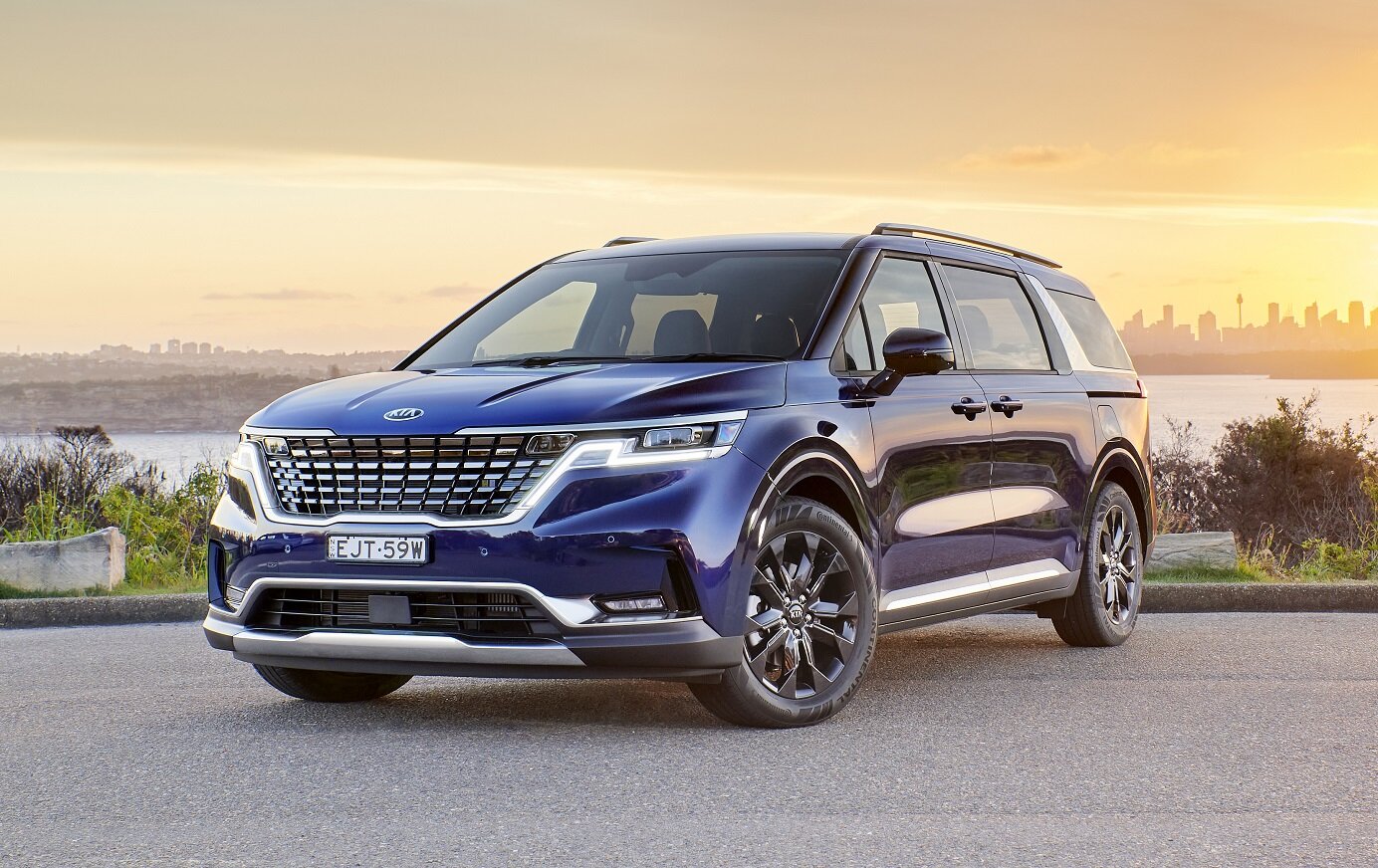

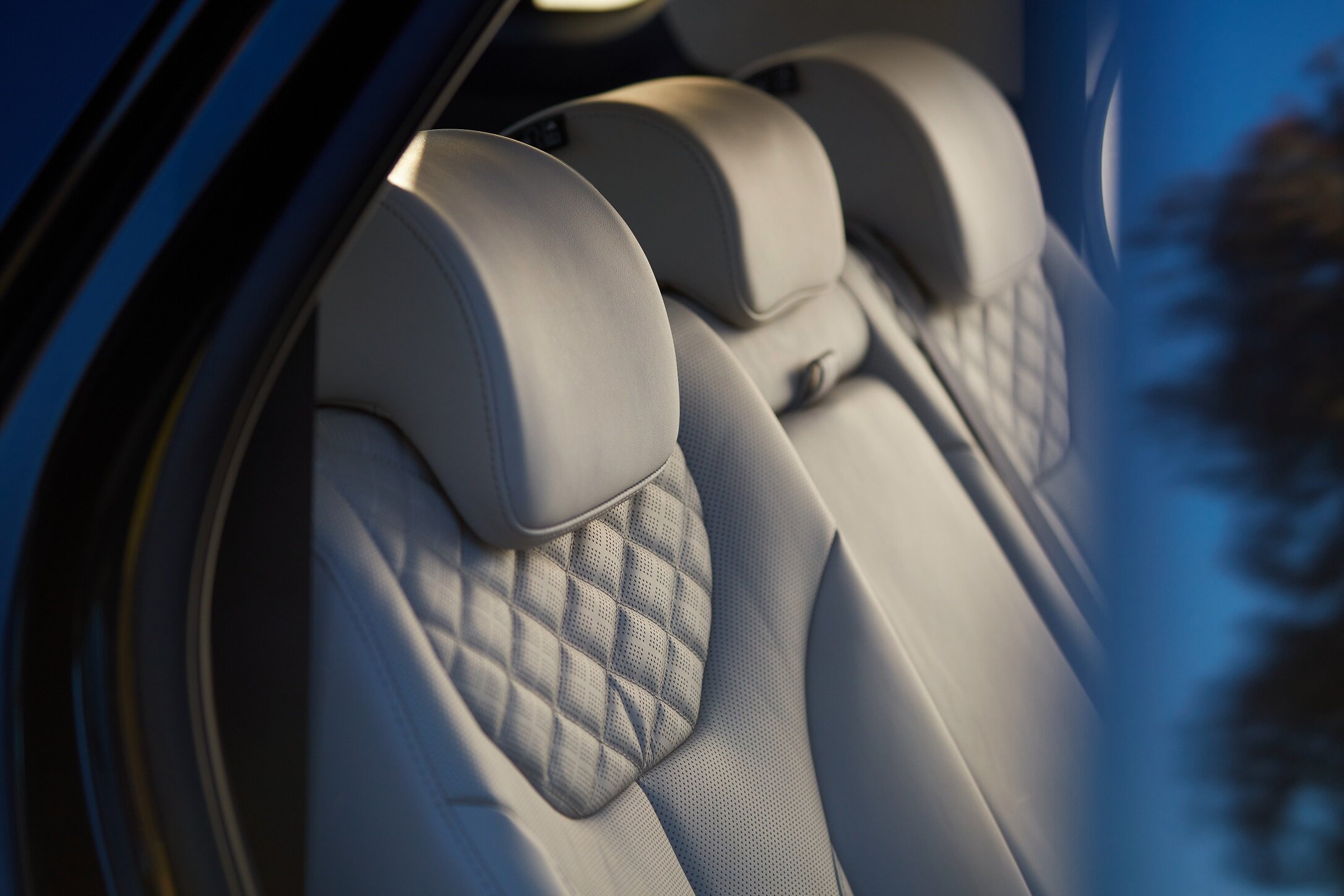


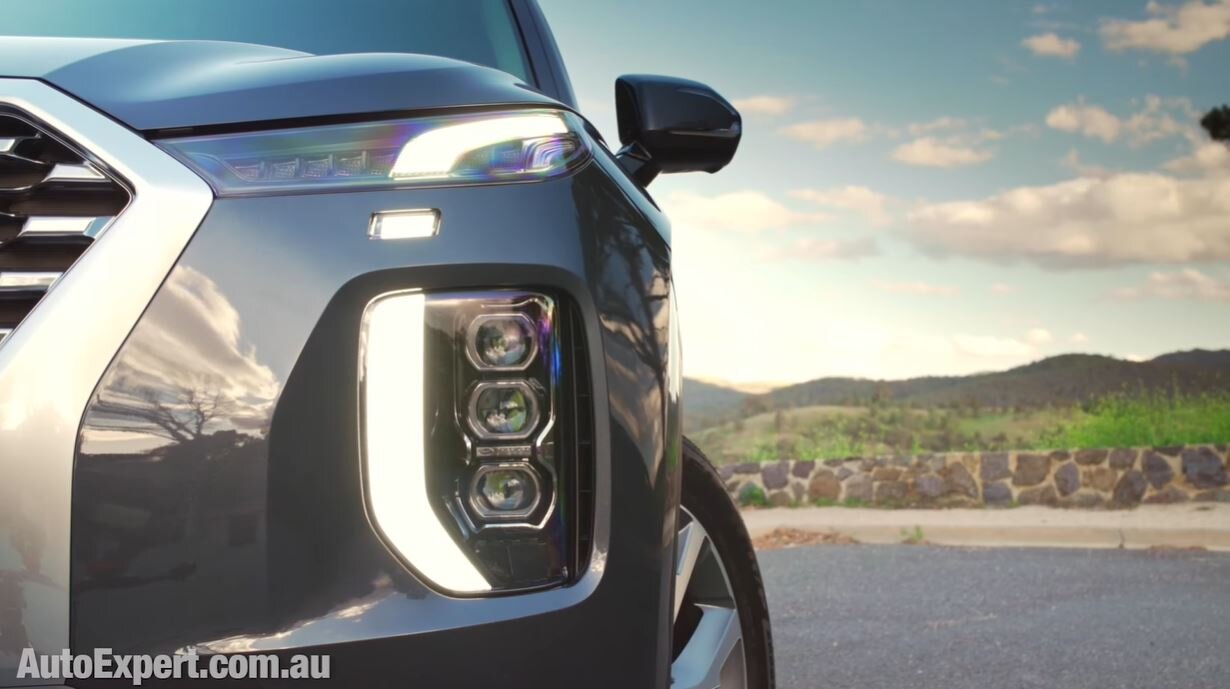
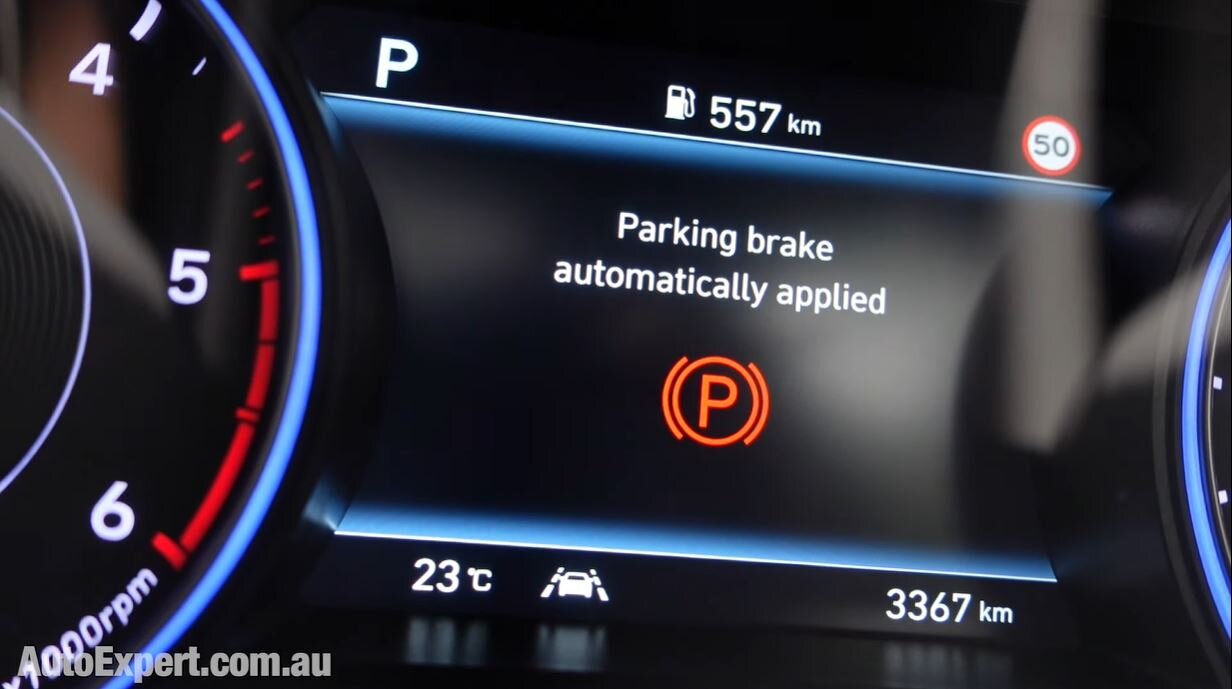
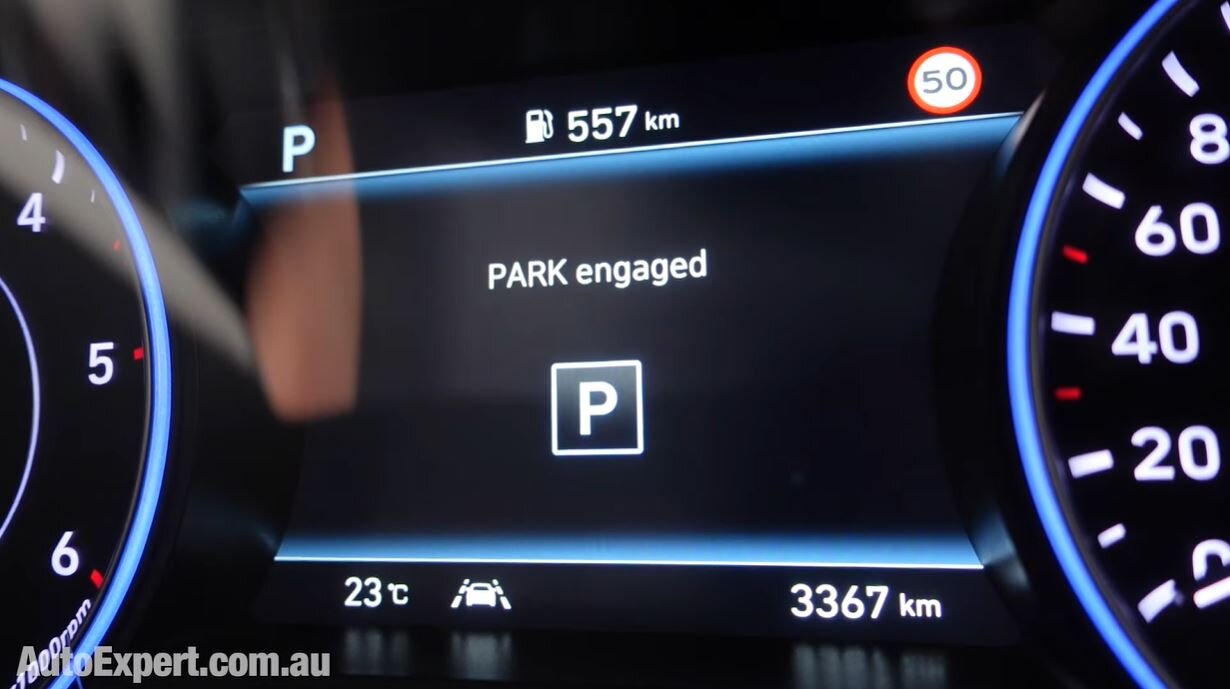
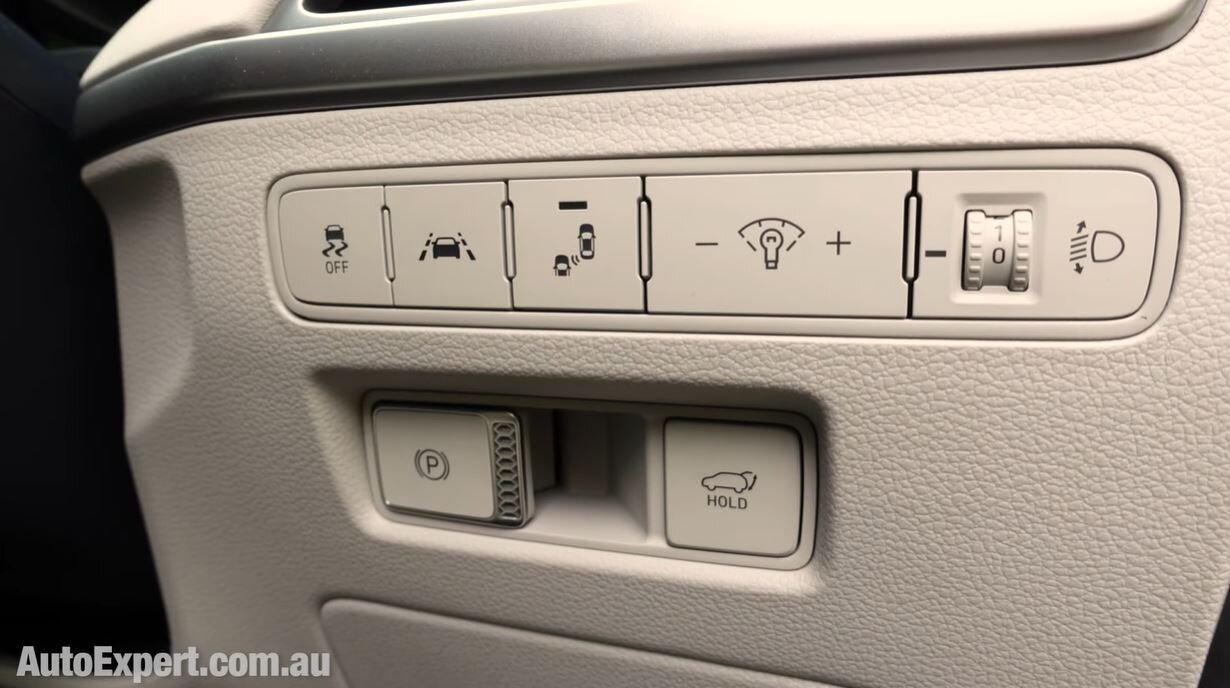
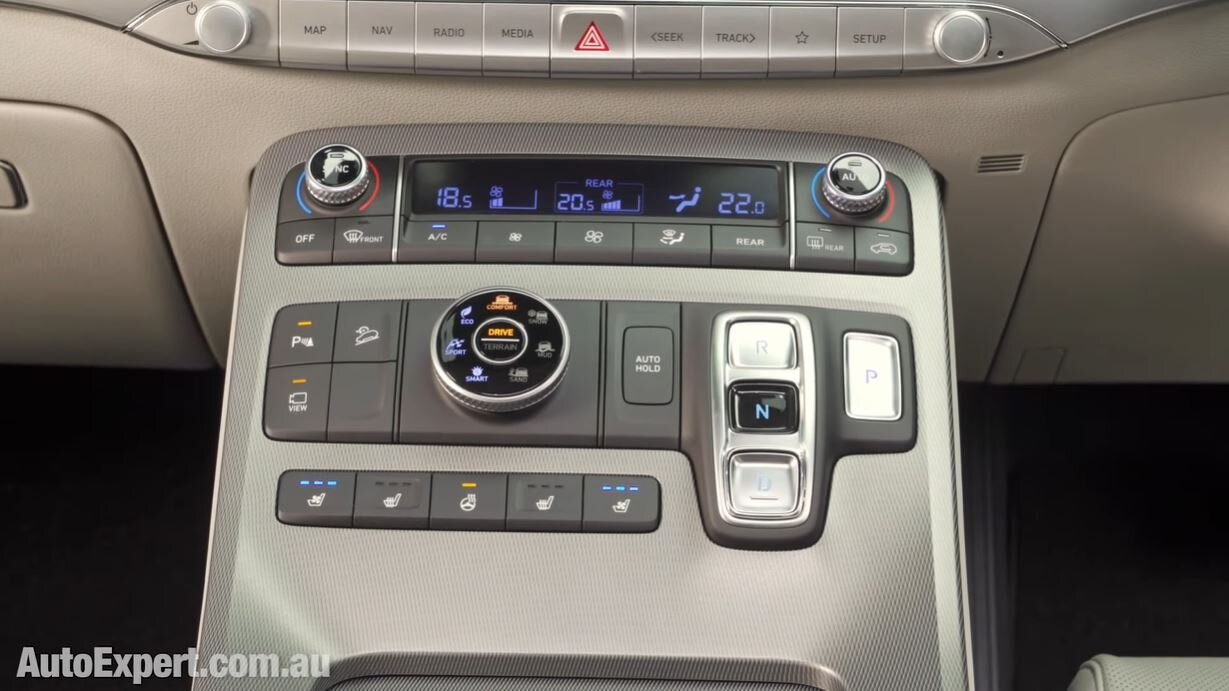
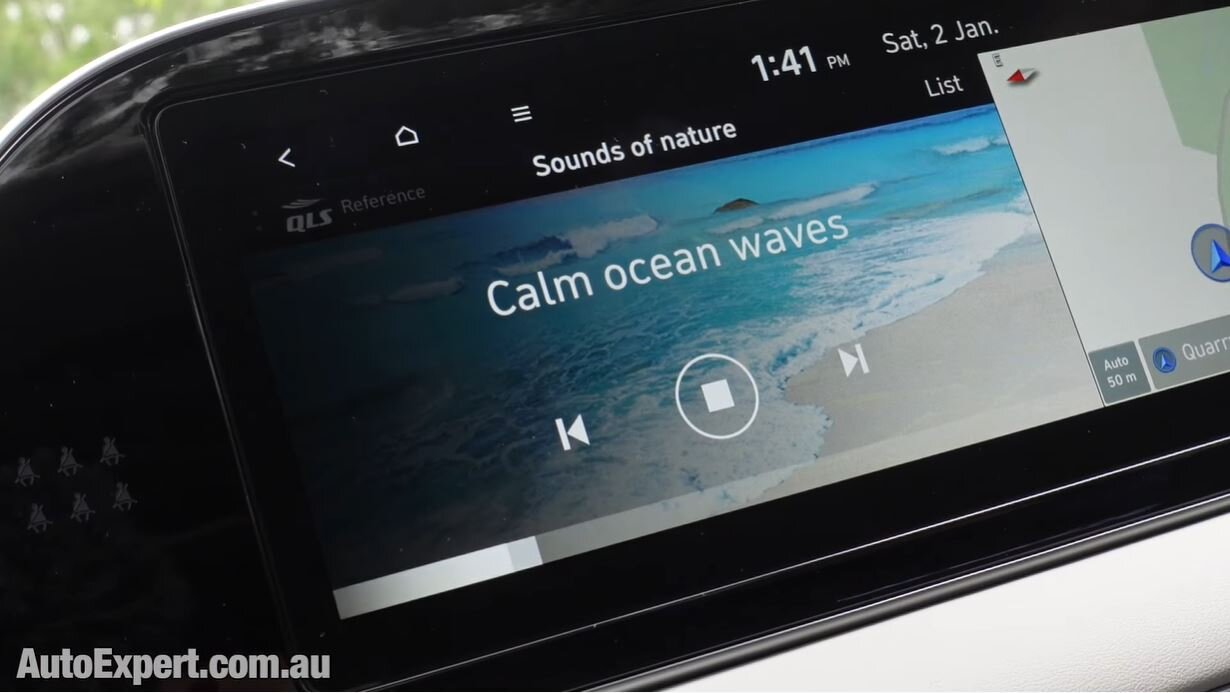
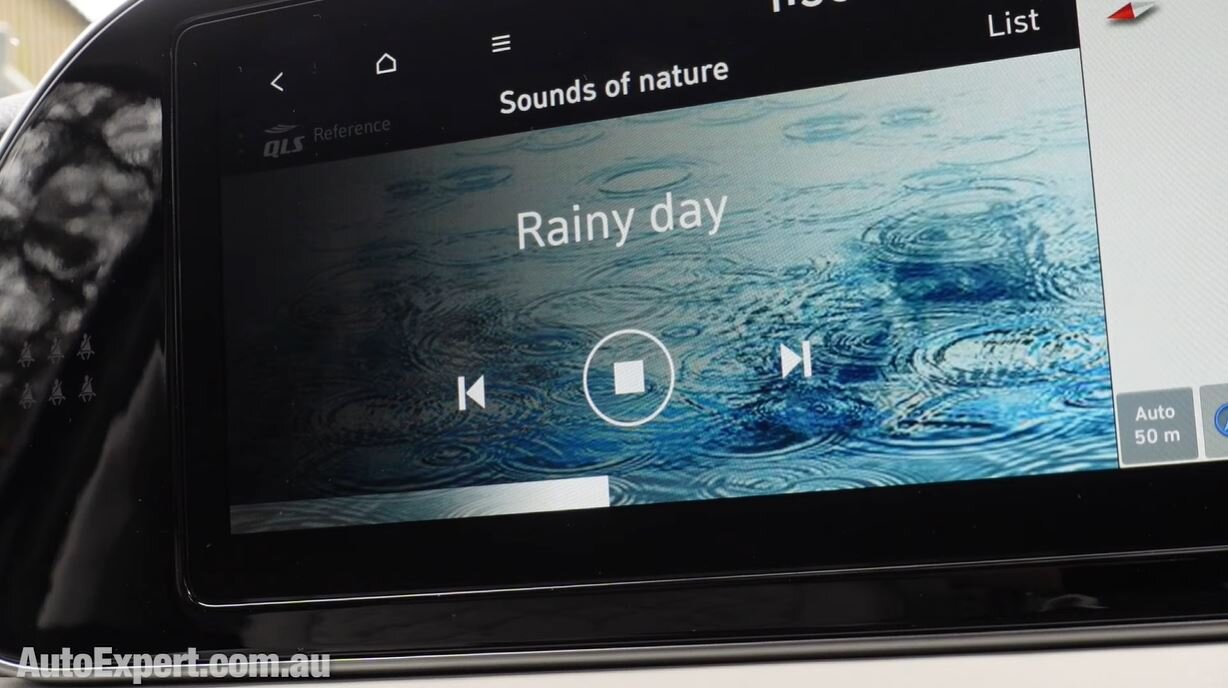

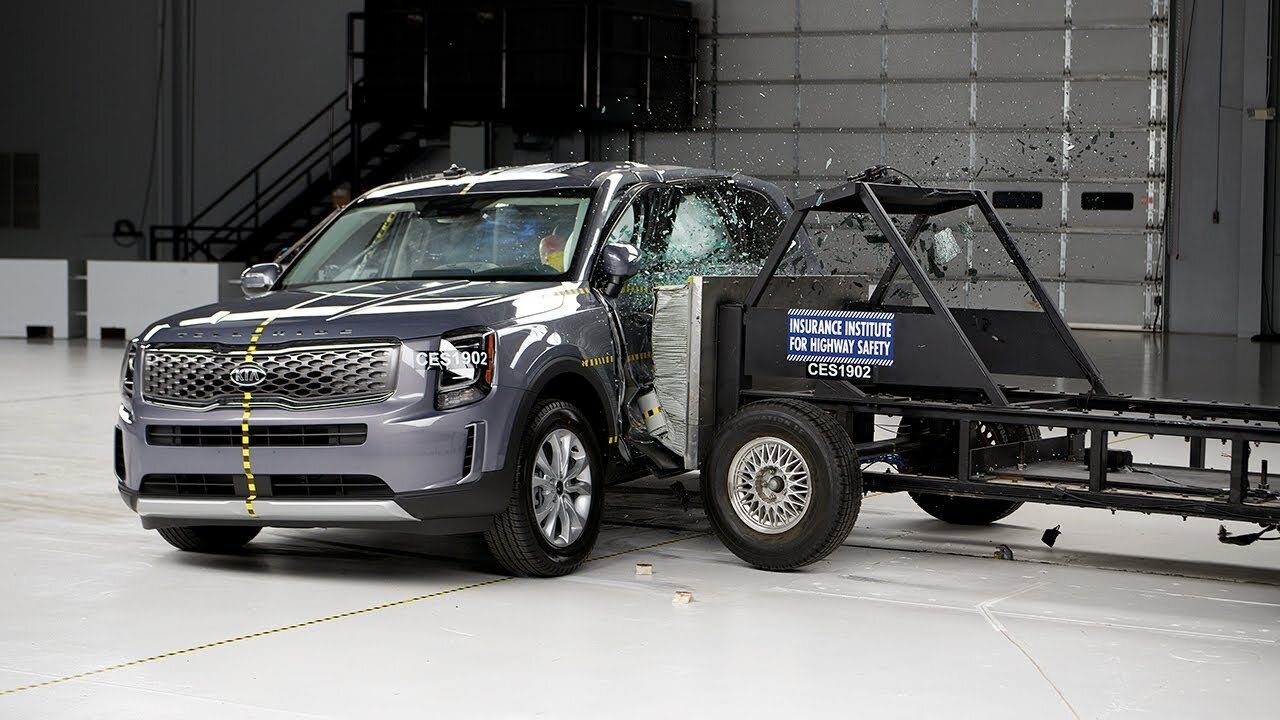

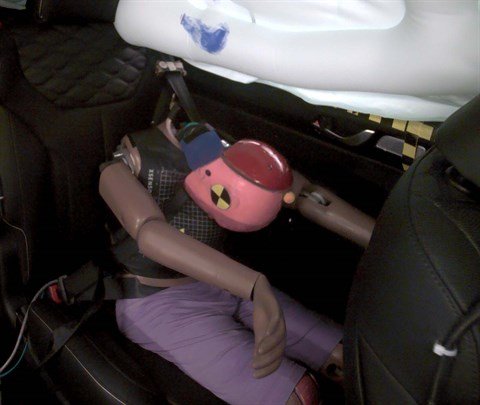

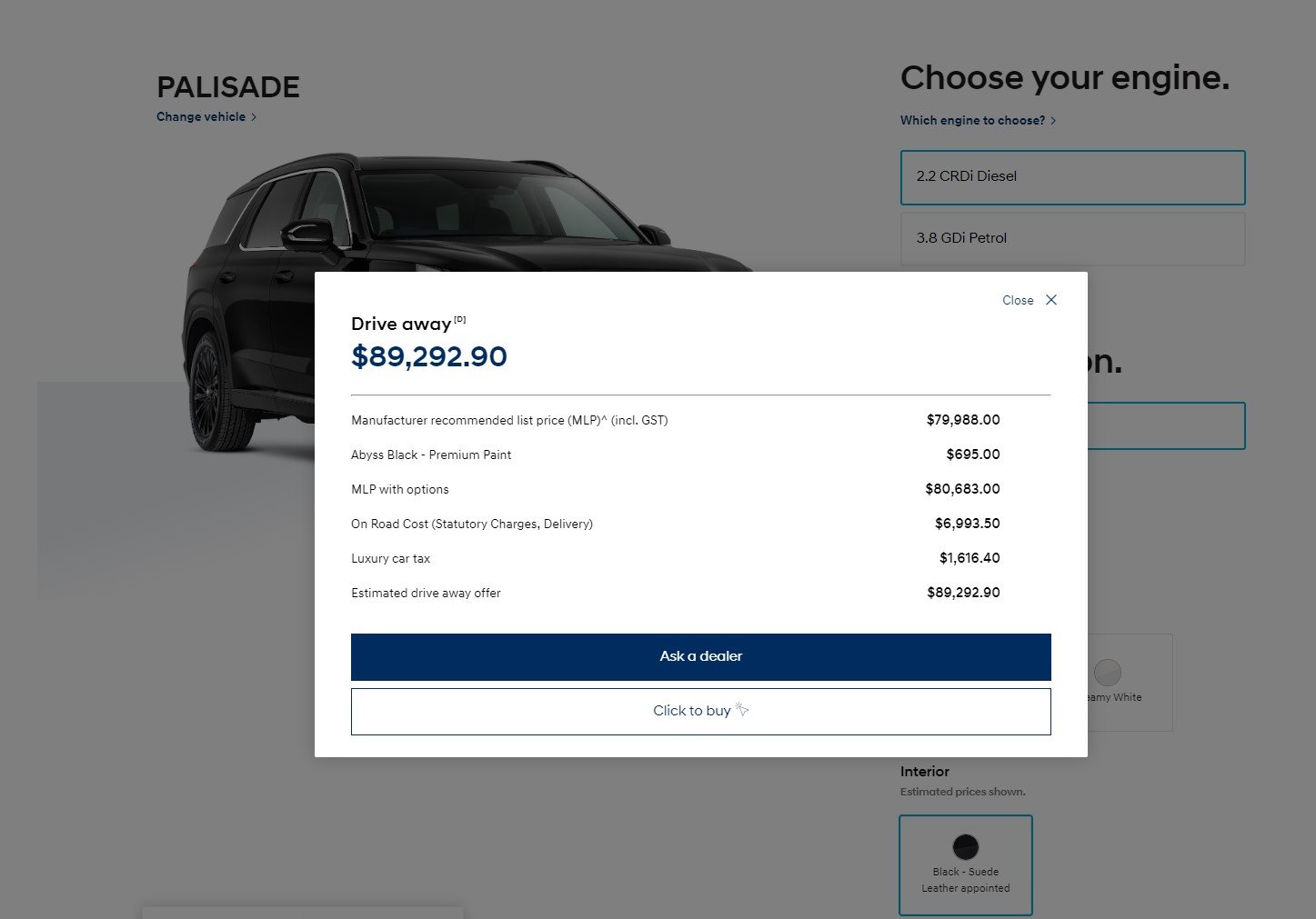











The Subaru Outback has a growling turbocharged engine, a five-seat SUV wagon body and lots of clever, practical equipment. For adventurous families, it will also tow, haul and drive beautifully - at a modest price.